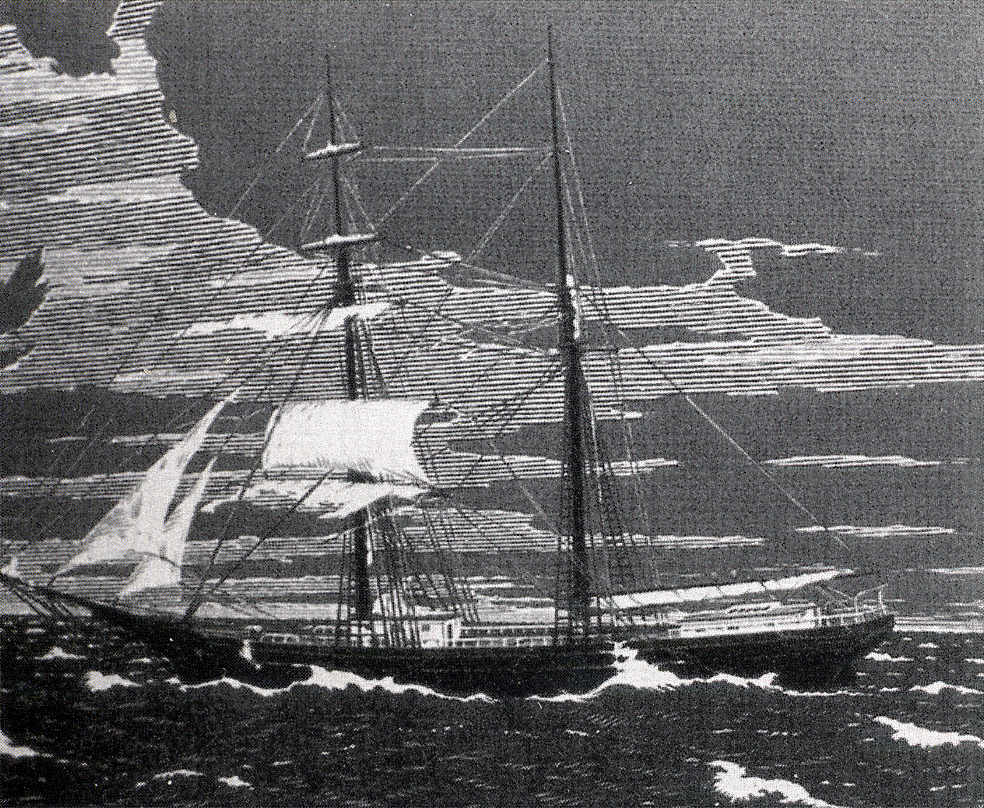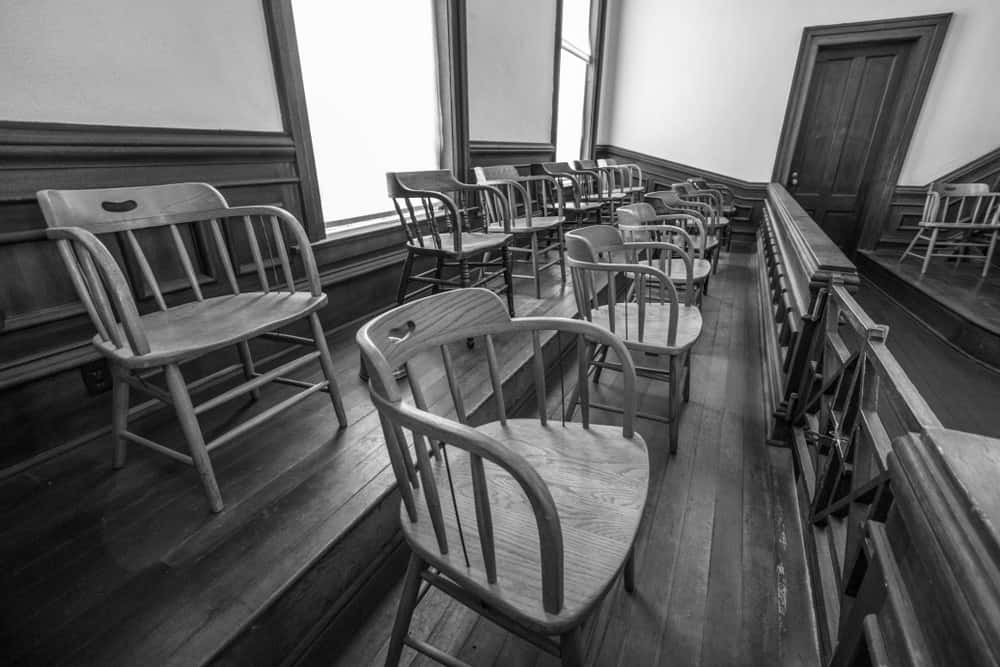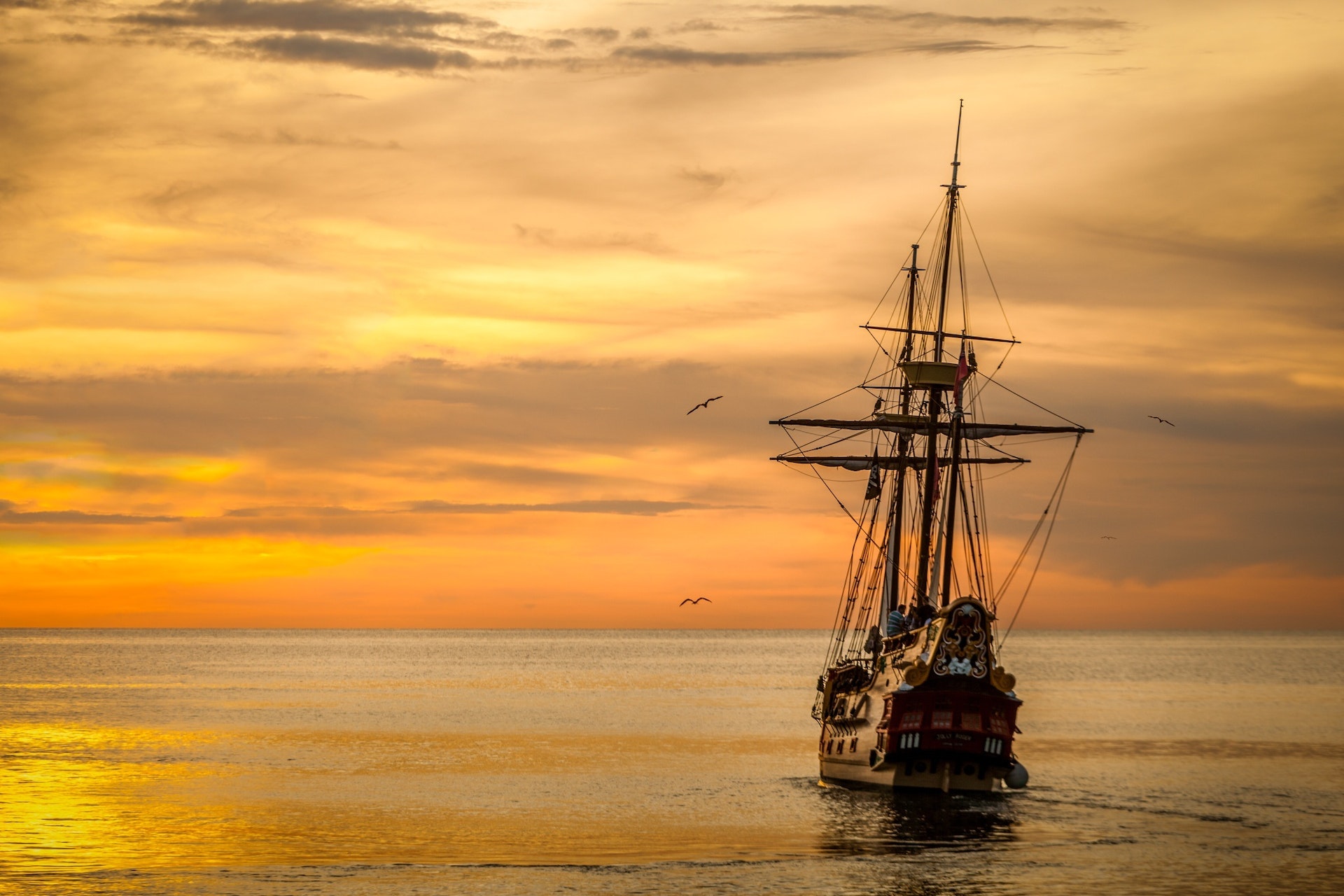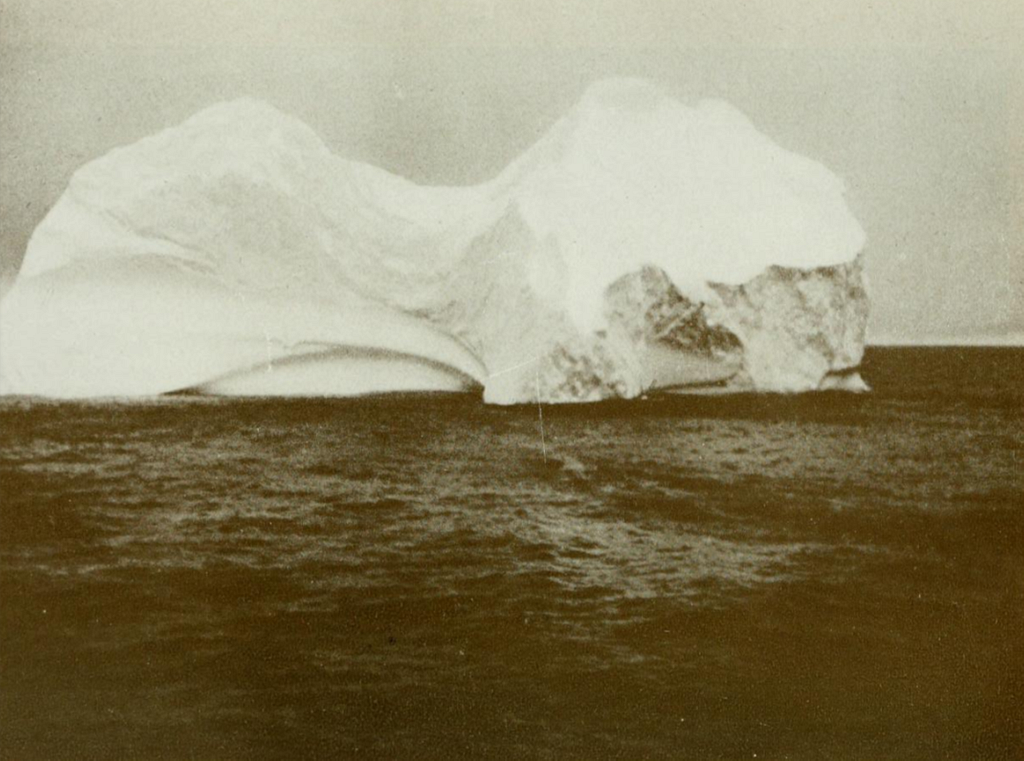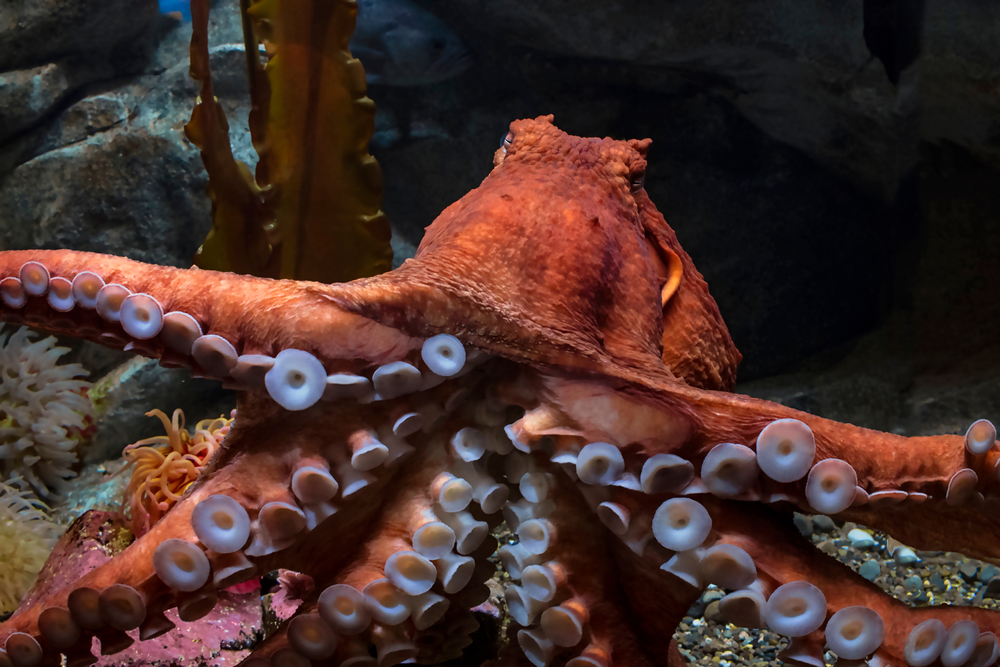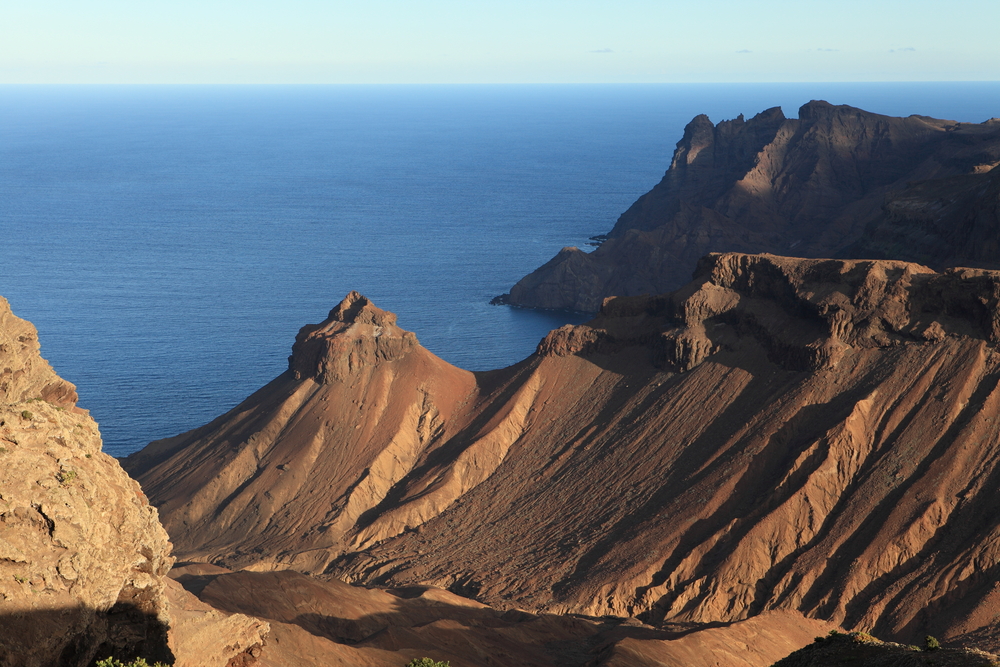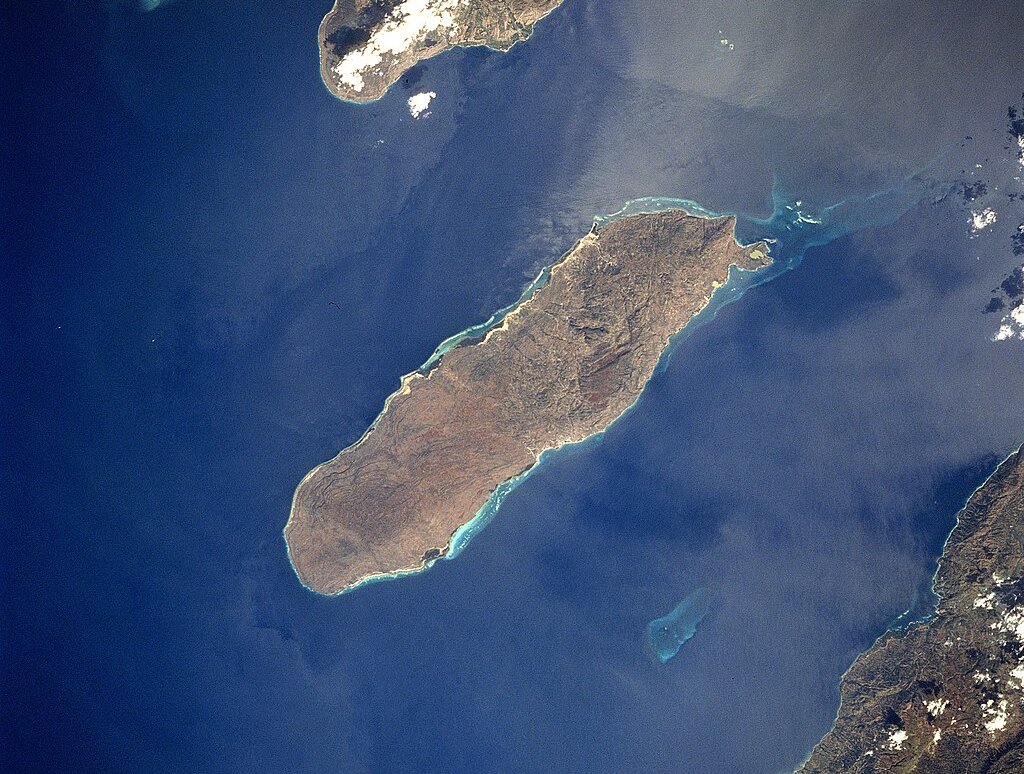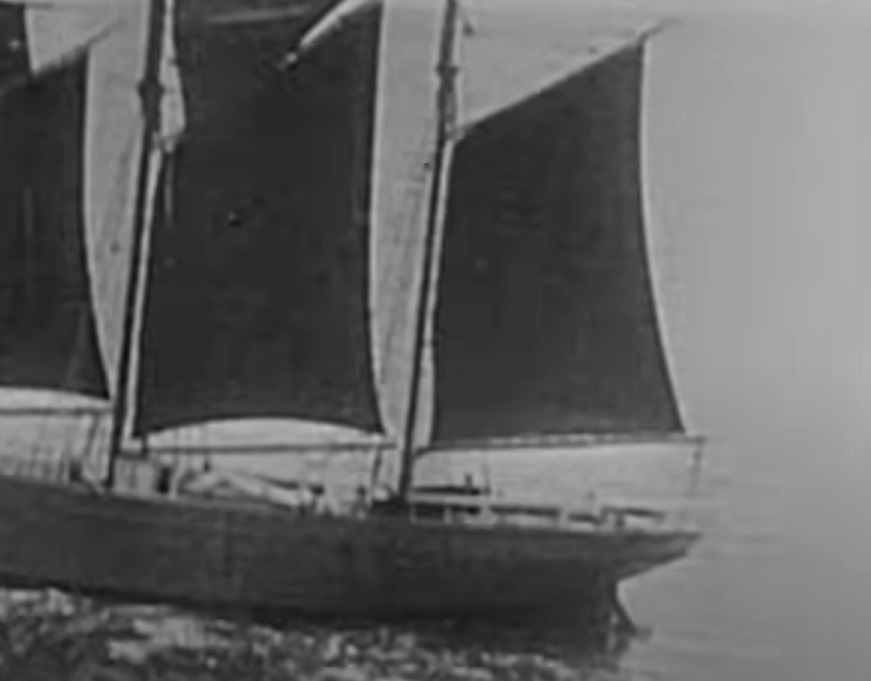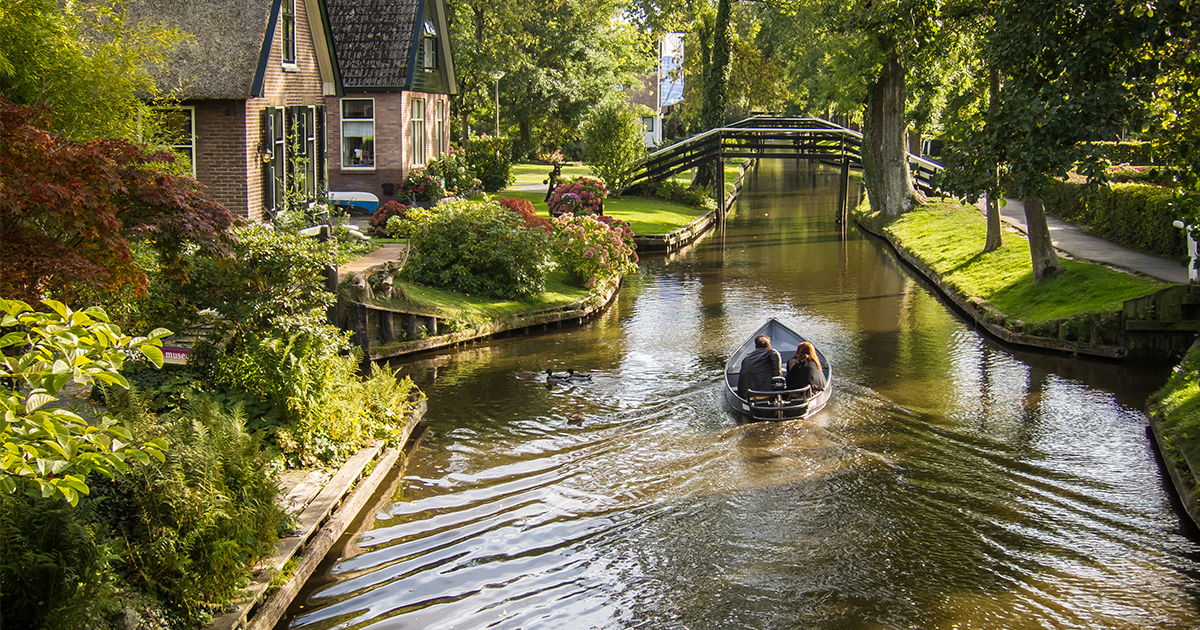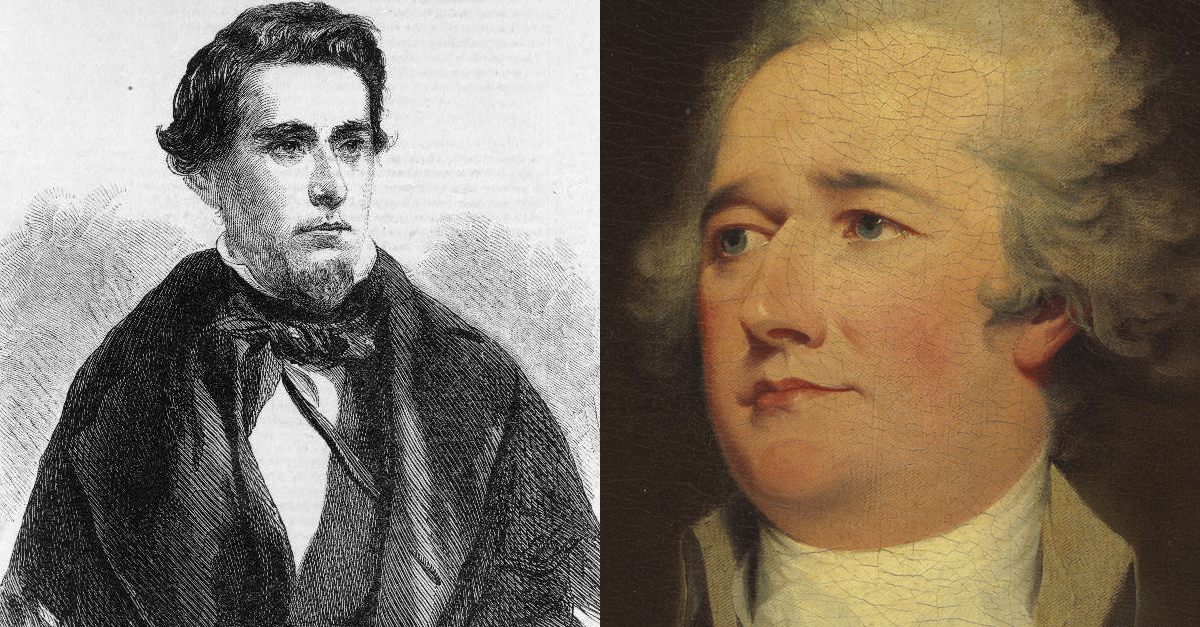A Maritime Mystery
Uncover the details about the mysterious true story of the Mary Celeste—the abandoned ship that cursed its captains for decades.
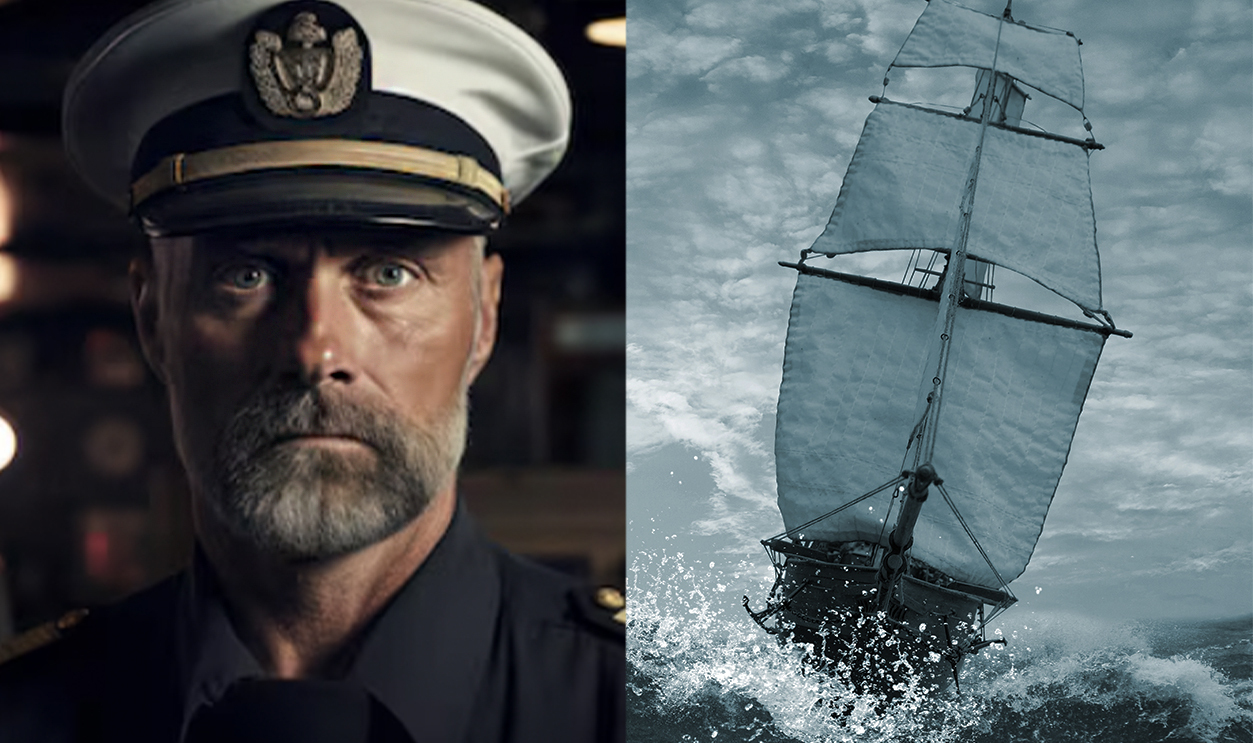
The Mary Celeste Story
From the very beginning, the Mary Celeste was ridden with tragedy. But one voyage involving a vanishing crew of 11 people has left the world speculating for decades.
The fate of the captain and crew remains one of the most enduring maritime mysteries in history.
From theories of giant octopuses to paranormal activity, find out what really happened to the Mary Celeste.
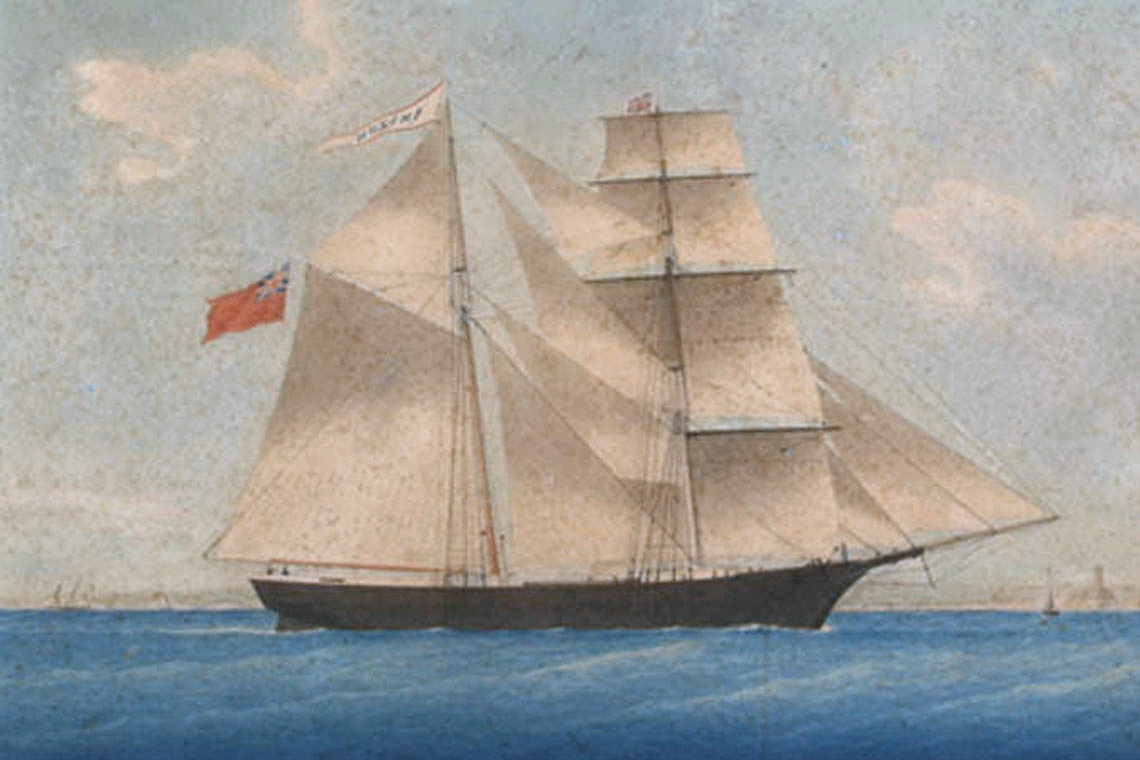 Honore Pellegrin, Wikimedia Commons
Honore Pellegrin, Wikimedia Commons
The Ship
The Mary Celeste was a Canadian-built 282-ton brigantine, constructed of locally felled timber. She was carvel-built—with the hull planted flush rather than overlapping.
Originally, she was named Amazon, and she had quite the adventures—and misadventures—from her maiden voyage to her final voyage, and even afterward.
Her Maiden Voyage
In June of 1861, the Amazon took her maiden voyage to Five Islands, Nova Scotia, to take on a cargo of timber for passage across the Atlantic to London. During the loading, the ship’s captain became ill. The Amazon returned to Spencer Island where Captain McLellan passed from his illness.
While his illness was unexpected, it was common for unwell people to pass from their ailments during that time, as medical advancements had not yet been made.
A new captain took over the ship, but the tragedy wasn’t over yet.
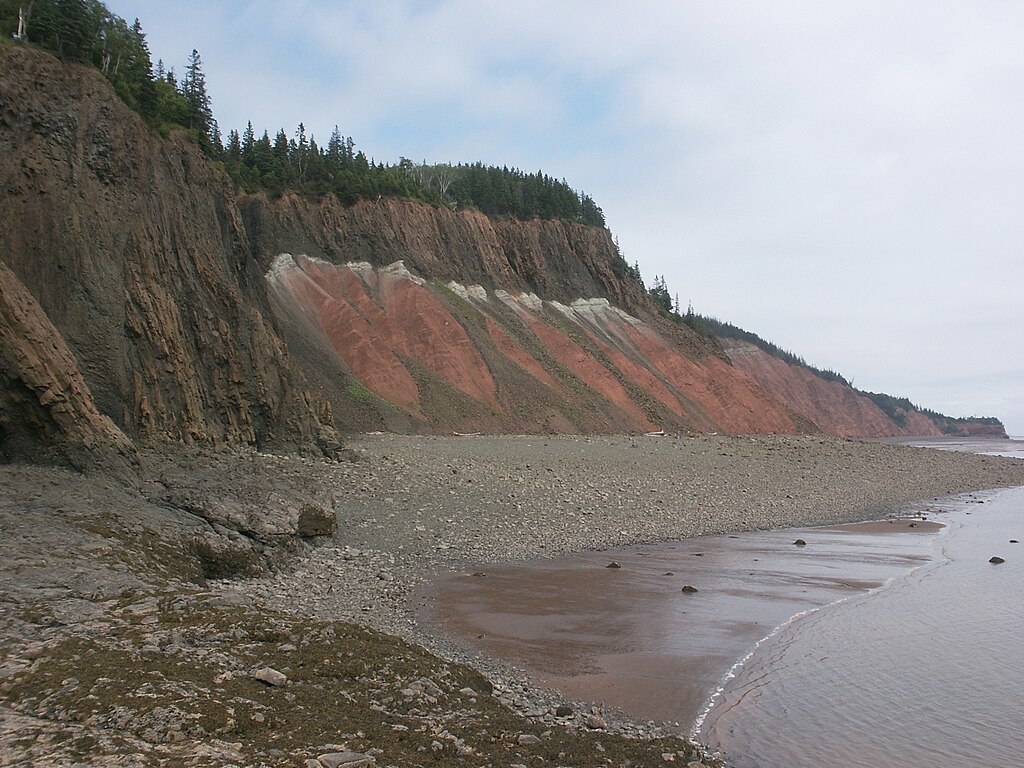 Michael C. Rygel, CC BY-SA 3.0, Wikimedia Commons
Michael C. Rygel, CC BY-SA 3.0, Wikimedia Commons
Misadventures
Captain John Nutting Parker took over and resumed the voyage to London. During its journey, the Amazon encountered further misadventures. Not only did she collide with fishing equipment off Eastport, Maine, but after leaving London, she also ran into and sank a brig in the English Channel.
And that was just her maiden voyage.
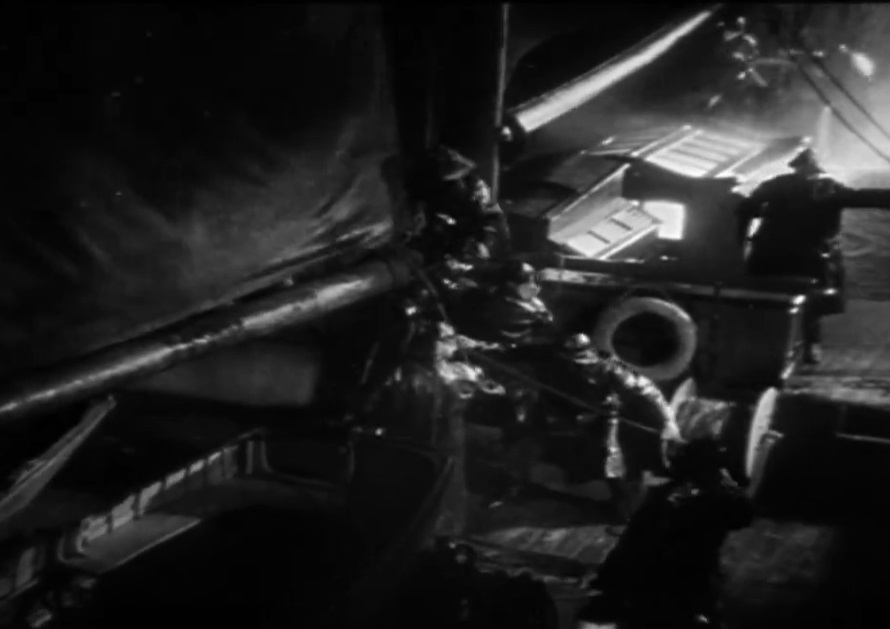 Hammer, The Mystery of the Mary Celeste (1935)
Hammer, The Mystery of the Mary Celeste (1935)
She Was A Work Of Art
The Amazon worked the next two years mainly in the West Indies trade, with Parker still in command. She crossed the Atlantic to France in 1861, and was the subject of a painting by Honoré de Pellegrin, a well-known maritime artist of the Marseilles School.
In 1863, Parker was succeeded by William Thompson, who remained in command until 1867. During that time, things were fairly quiet for the Amazon.
But then in October of 1867, a storm hit.
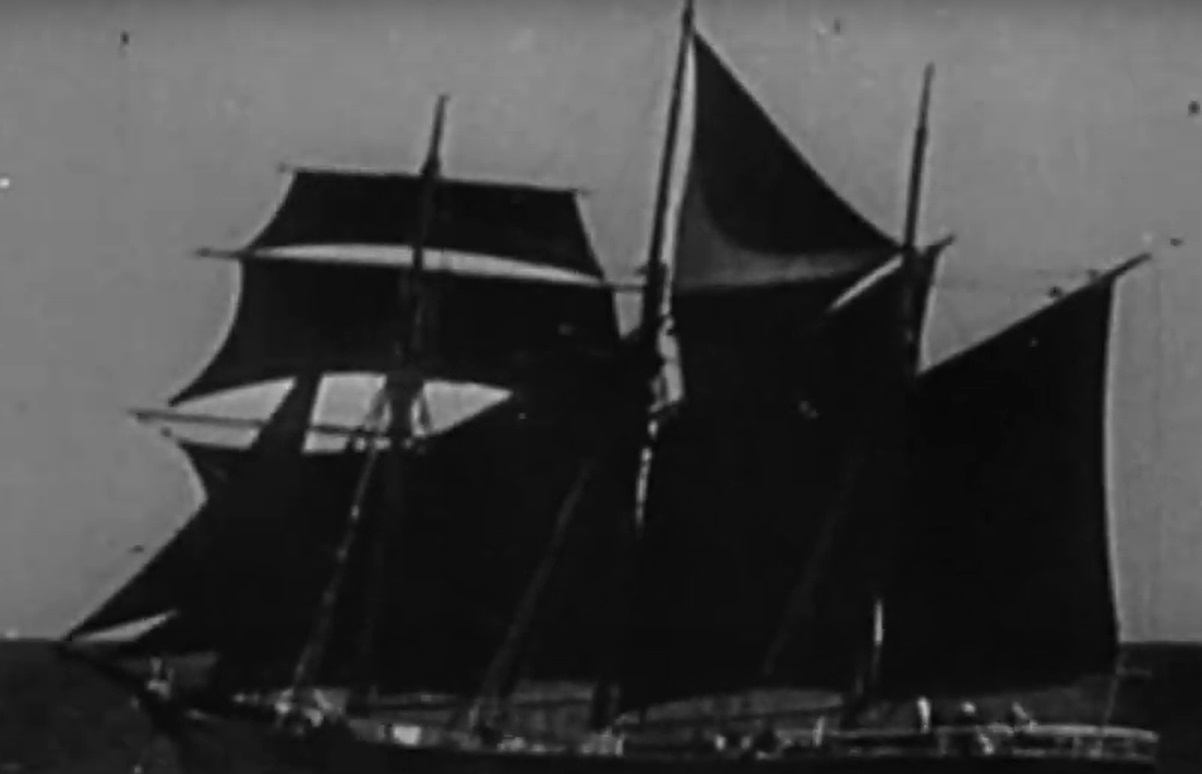 Hammer, The Mystery of the Mary Celeste (1935)
Hammer, The Mystery of the Mary Celeste (1935)
The Big Storm
The storm drove the Amazon ashore on Cape Breton Island. She was so badly damaged that her owners abandoned her as a wreck. But this isn’t the mysterious wreckage just yet, this is still only the beginning.
Not long after, she was acquired as a shipwreck by a guy from Nova Scotia.
But he didn’t keep her.
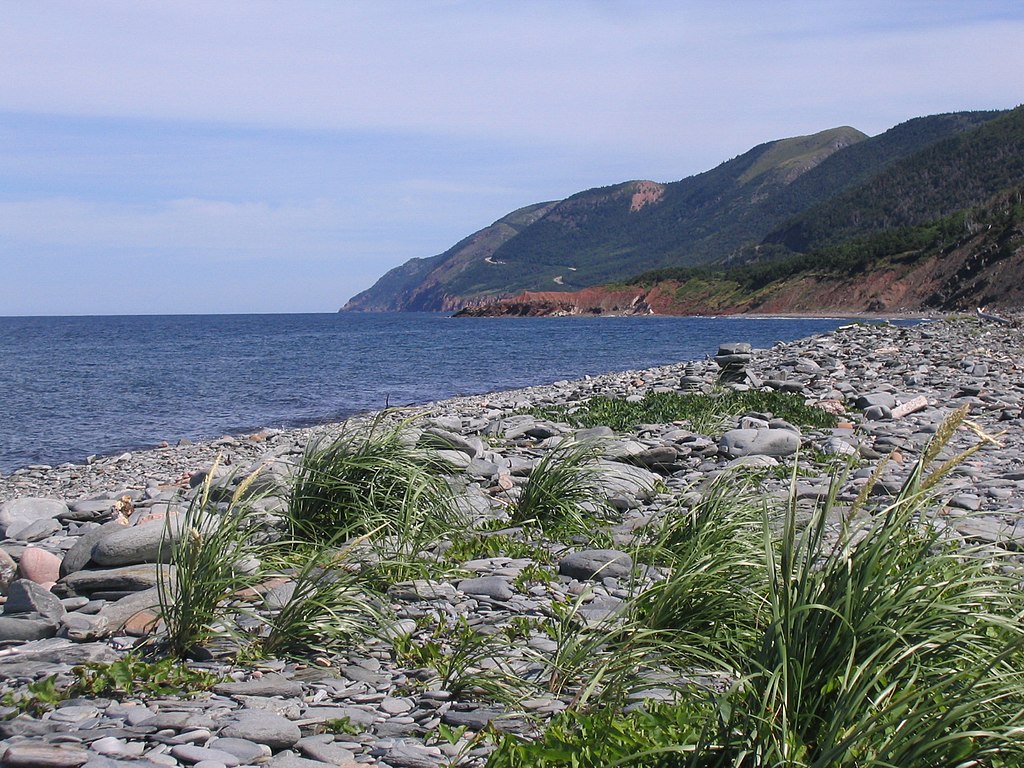 Aconcagua, CC BY-SA 3.0, Wikimedia Commons
Aconcagua, CC BY-SA 3.0, Wikimedia Commons
Her New Name
What was left of the Amazon was quickly sold to a local businessman, who then sold it to an American mariner from New York, Richard W Haines, in 1868.
This time, Haines kept it. He paid $1,750 for the wreckage and then spent $8,825 restoring it. He made himself the captain and gave her a new name: Mary Celeste.
Sadly, Haines put a lot of work into the ship but never got it wet.
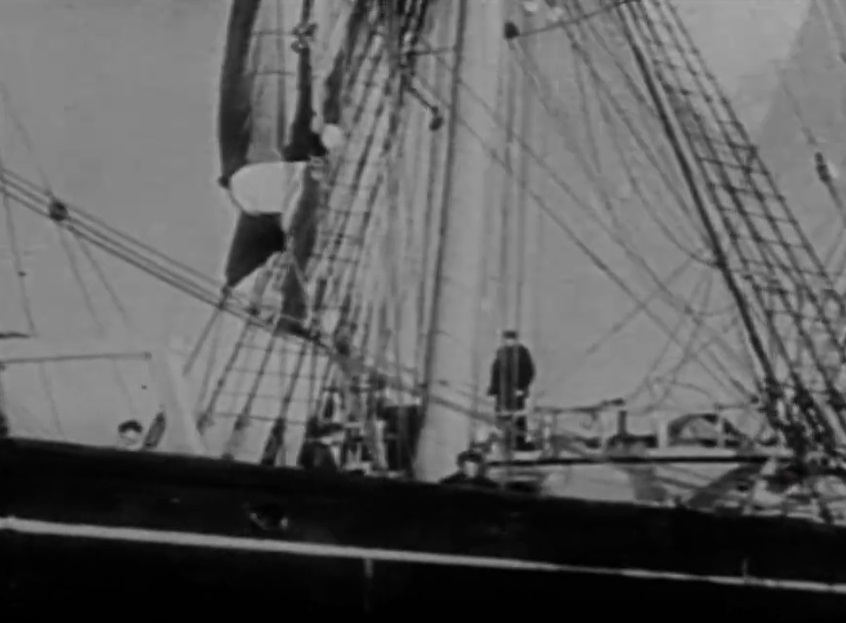 Hammer, The Mystery of the Mary Celeste (1935)
Hammer, The Mystery of the Mary Celeste (1935)
Another Exchange
Haines apparently had some trouble paying off his debt, and the following year, the ship was seized by his creditors. It was sold to a consortium headed by James H Winchester, and went under the radar for several years—until a major project began.
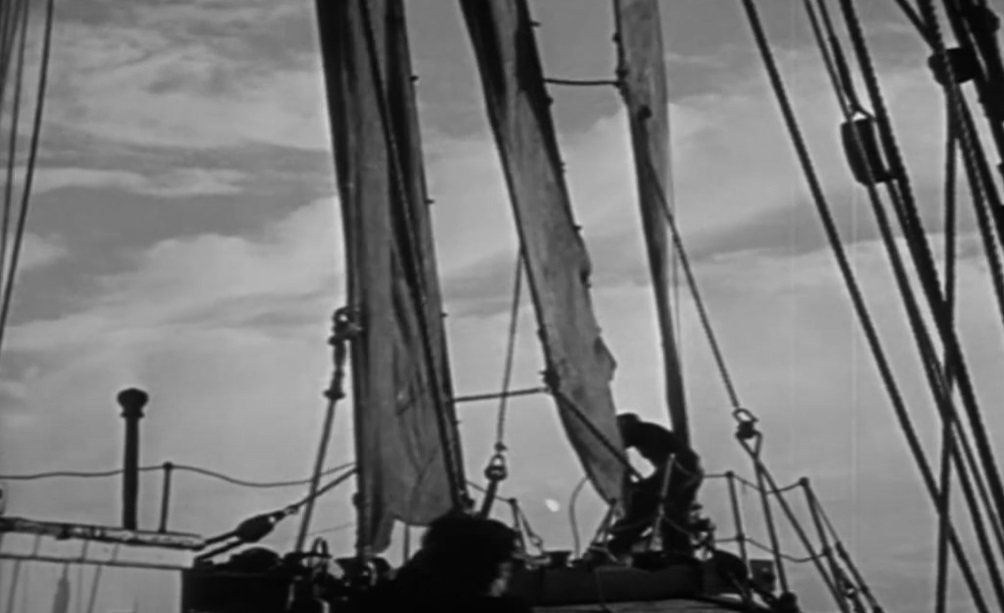 Hammer, The Mystery of the Mary Celeste (1935)
Hammer, The Mystery of the Mary Celeste (1935)
Her Restoration
In 1872, the ship got another makeover, costing a whopping $10,000. Her length was increased to 103 feet (31 m), her breadth to 25.7 feet (7.8 m) and her depth to 16.2 feet (4.9 m). She also got a second deck—and another new captain.
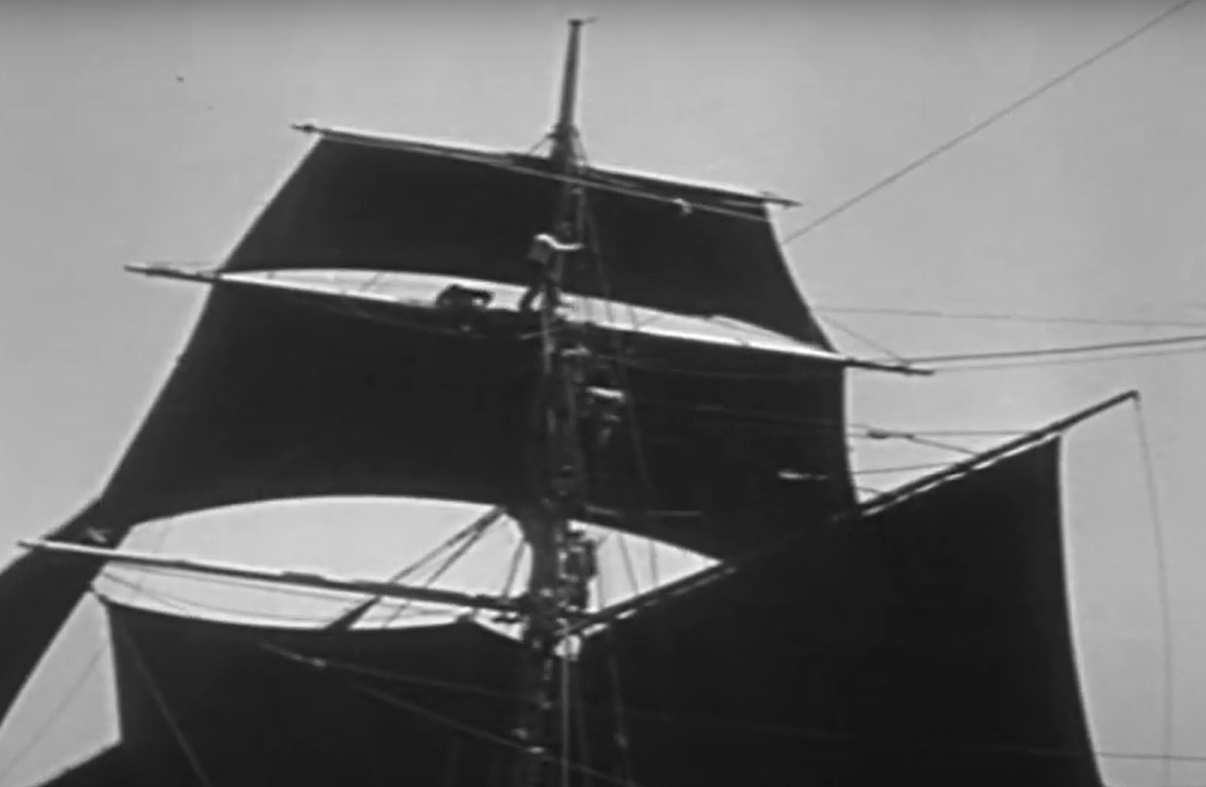 Hammer, The Mystery of the Mary Celeste (1935)
Hammer, The Mystery of the Mary Celeste (1935)
Benjamin Briggs
Benjamin Spooner Briggs, an American family man with a family history at sea, took command of Mary Celeste, and prepared for her first voyage after her extensive refit—to Genoa, Italy.
Excited for the journey, he decided to bring his wife, Sarah, and their two-year-old daughter, Sophia, leaving their school-aged son at home with his grandmother.
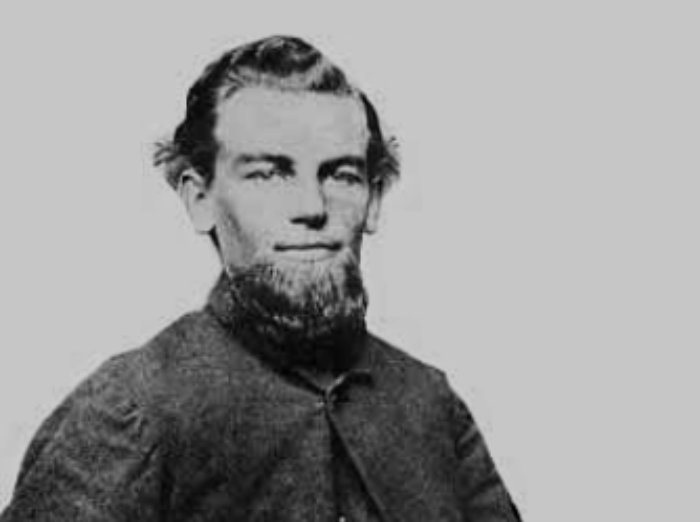 Unknown Author, Wikimedia Commons
Unknown Author, Wikimedia Commons
The Crew
Briggs chose his crew carefully, with each bringing various skills and experience, and all of them highly recommended by the ship’s owner, Winchester. Some also had affiliations with Briggs himself.
Briggs was confident in his crew and the voyage ahead.
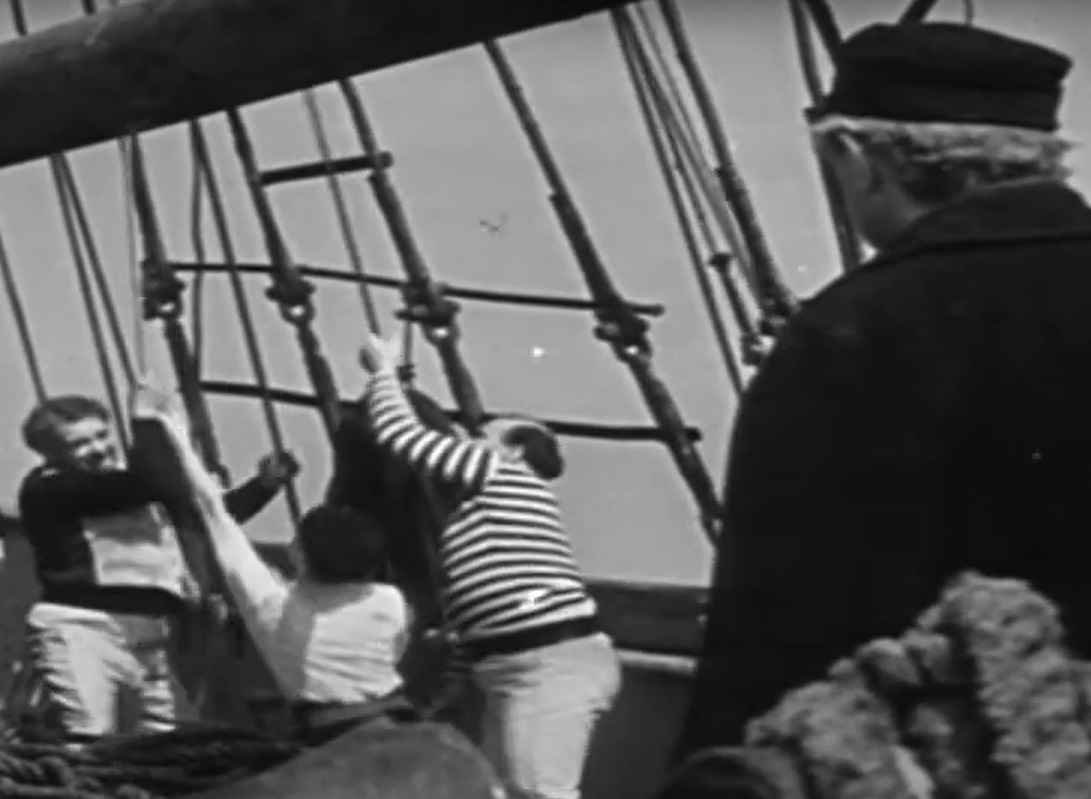 Hammer, The Mystery of the Mary Celeste (1935)
Hammer, The Mystery of the Mary Celeste (1935)
The Departure
On November 7, 1872, the Mary Celeste set sail from New York Harbor en route to Genoa Italy, carrying a large cargo of alcohol. It was two days behind schedule, but Briggs had decided to wait out some nasty weather, to err on the side of caution.
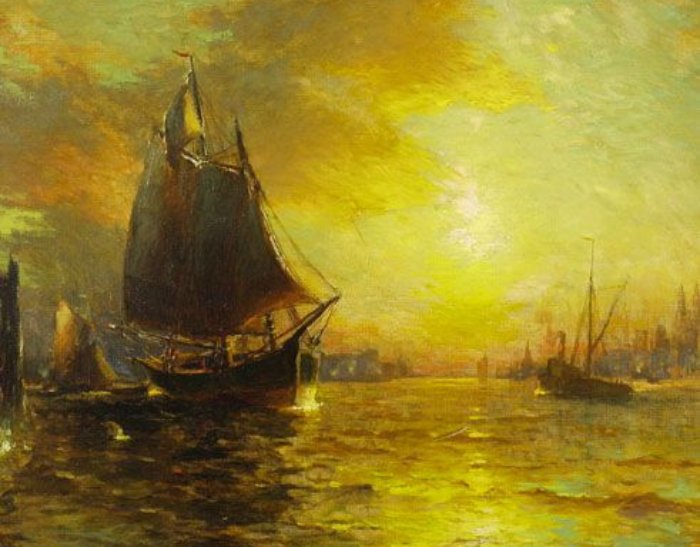 George McCord, Wikimedia Commons
George McCord, Wikimedia Commons
David Morehouse
Eight days after Mary Celeste departed, another Canadian ship, Dei Gratia also left on the same route to Genoa. Briggs and Dei Gratia’s captain, David Morehouse, had known each other and had met up the night before Briggs left for a celebratory dinner, vowing to meet up for a brew in Italy after their arrivals.
It was a vow that would soon be broken.
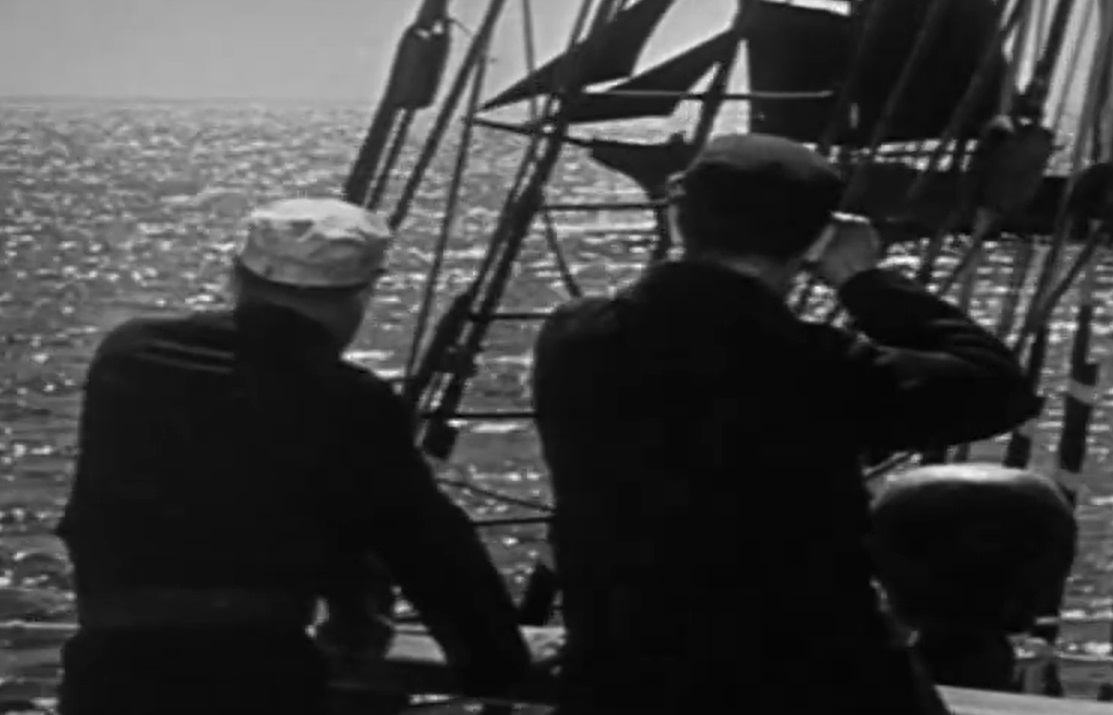 Hammer, The Mystery of the Mary Celeste (1935)
Hammer, The Mystery of the Mary Celeste (1935)
The Disturbing Discovery
About a month into the journey, on December 4, 1872, Captain Morehouse discovered a vessel heading unsteadily towards Dei Gratia, at a distance of only six miles (9.7 km).
The ship’s erratic movements caused him to suspect something was wrong—and as the vessel got closer, his suspicions grew stronger.
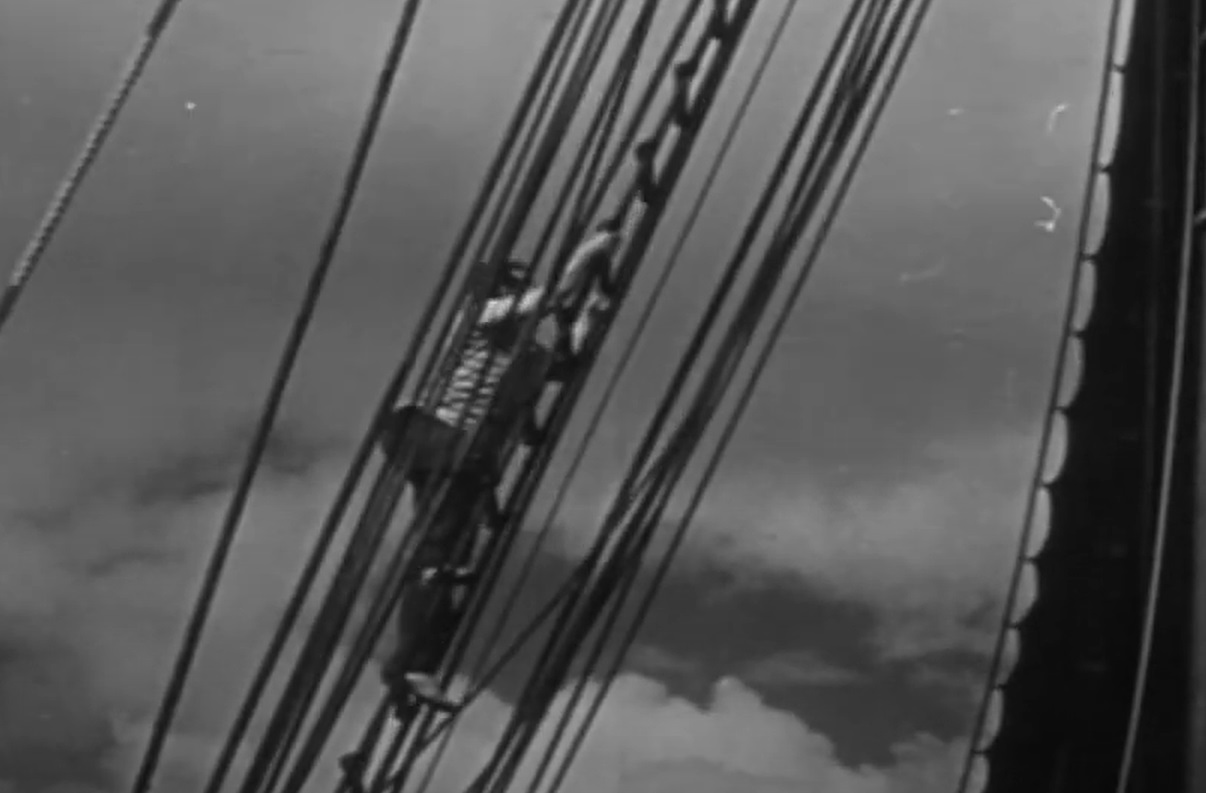 Hammer, The Mystery of the Mary Celeste (1935)
Hammer, The Mystery of the Mary Celeste (1935)
Investigating The Vessel
Morehouse sent out several signals, but no one replied. As the ship got closer, he could see that no one was on deck.
At this point, Morehouse decided to have two of his crew members, first mate Oliver Deveau and second mate John Wright, board the ship to investigate—and what they found left chills down their spines.
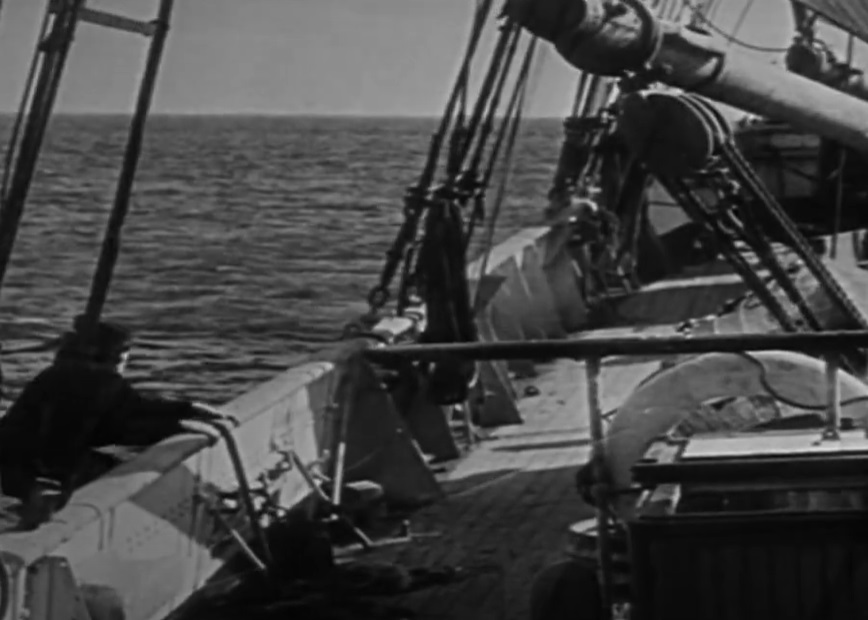 Hammer, The Mystery of the Mary Celeste (1935)
Hammer, The Mystery of the Mary Celeste (1935)
The Name Of The Ship
The two mates boarded the ship quietly and carefully and went for a walk to check things out. Moments later, they returned with devastating news.
The name on the ship’s stern read Mary Celeste, and it was obvious that it was in serious distress.
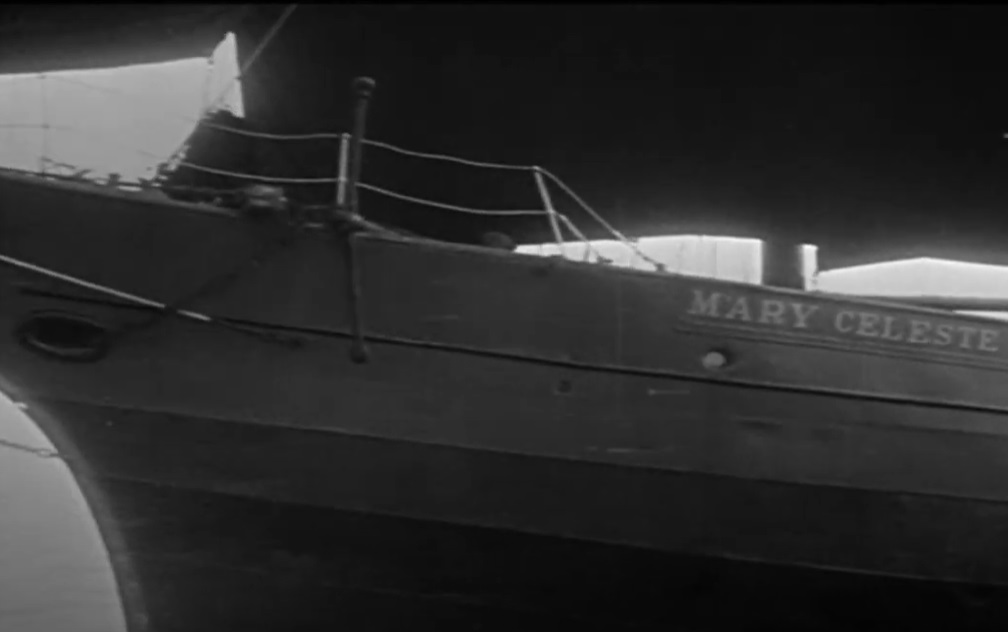 Hammer, The Mystery of the Mary Celeste (1935)
Hammer, The Mystery of the Mary Celeste (1935)
The Wreckage
Not only was this his friend’s ship, it was in bad shape. The sails were partly set and in a poor condition, some missing altogether, and much of the rigging was damaged, with ropes hanging loosely over the sides.
The main hatch cover was secure, but the fore and lazarette hatches were open, their covers beside them on the deck. The ship's compass had shifted from its place and its glass cover was broken.
That’s not even the worst of it, though.
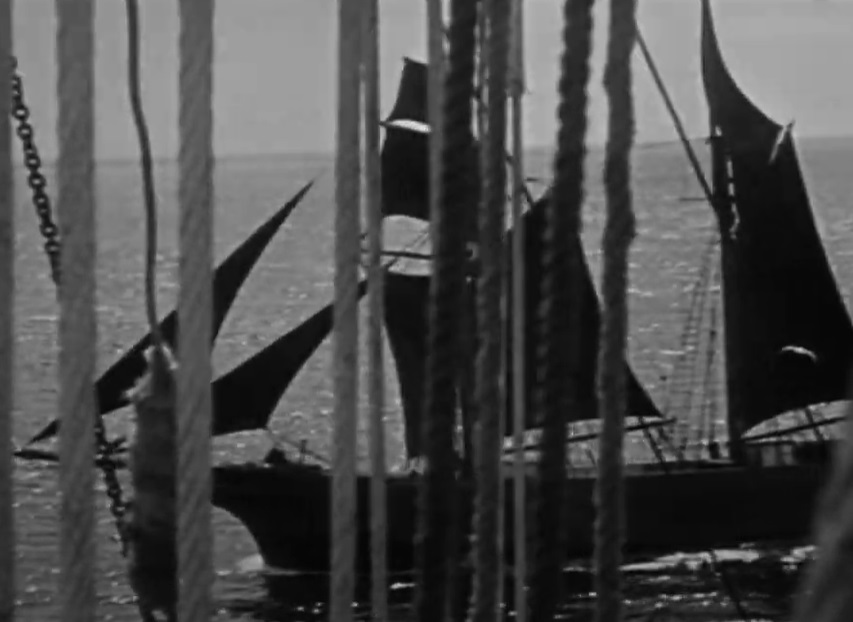 Hammer, The Mystery of the Mary Celeste (1935)
Hammer, The Mystery of the Mary Celeste (1935)
The Crew
While the ship had been badly broken, the worst part was that it had also been deserted. None of the ship’s crew were found, including Captain Briggs and his young family.
And the lifeboat was missing.
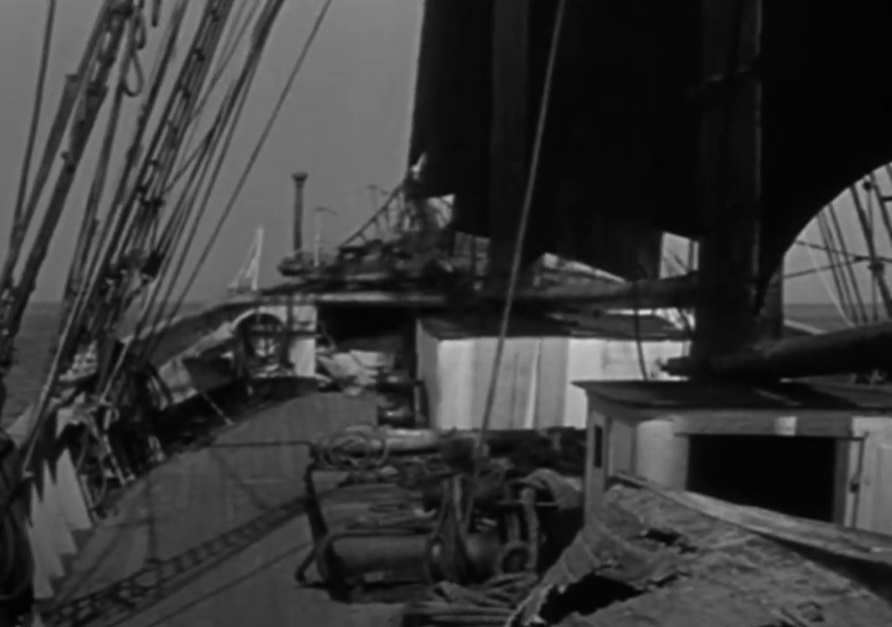 Hammer, The Mystery of the Mary Celeste (1935)
Hammer, The Mystery of the Mary Celeste (1935)
The Mystery
The ship may have been battered and abandoned, but it wasn’t sinking. There had been about three and a half feet (1.1 m) of water in the hold—which is a lot, but not an alarming amount for a ship of this size.
A makeshift sounding rod (a device for measuring the amount of water in the hold) was found abandoned on the deck.
What happened to this ship, and where did everyone go?
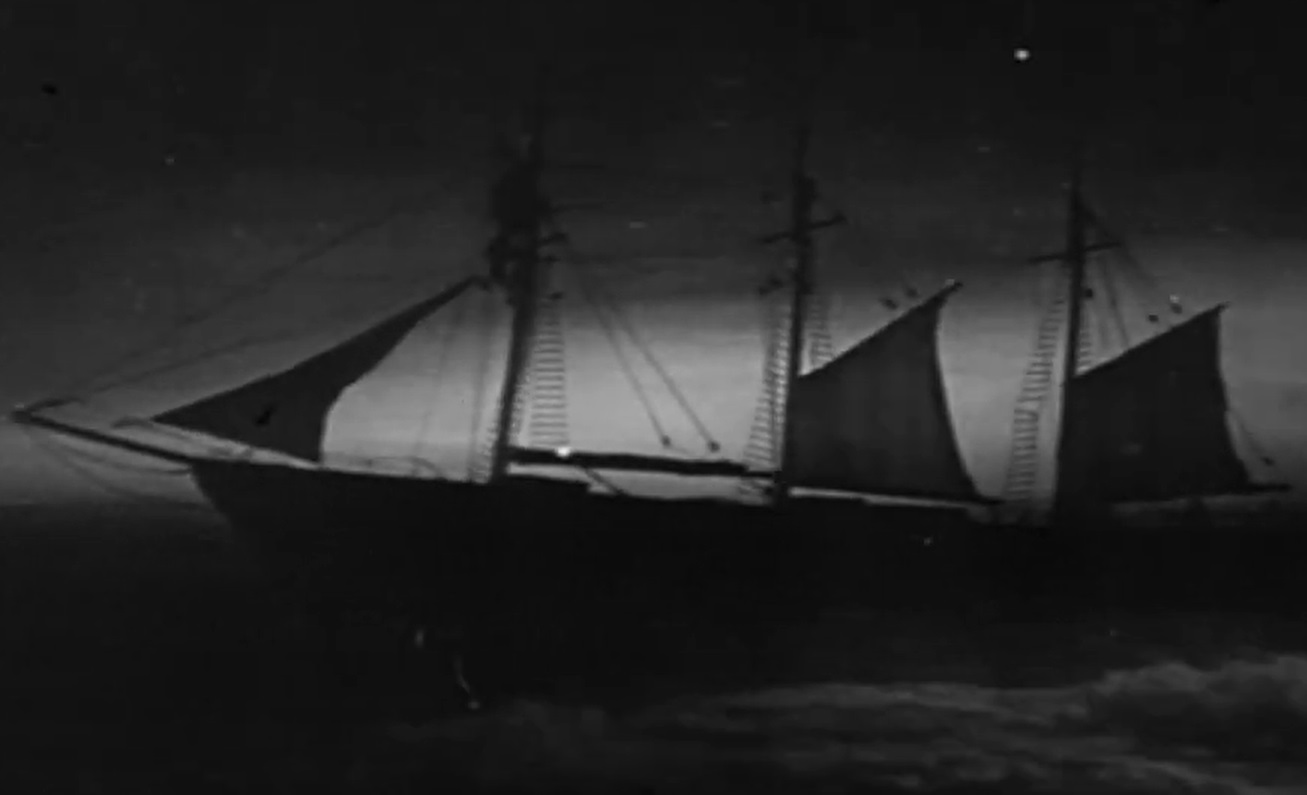 Hammer, The Mystery of the Mary Celeste (1935)
Hammer, The Mystery of the Mary Celeste (1935)
The Daily Log
Morehouse took a closer look at some things, in hopes of finding some answers to what happened. He found the ship’s daily log, with the final entry being dated at 8 am on November 25—nine days earlier.
The last recorded location was nearly 400 nautical miles (740 km) from the point where Dei Gratia found her abandoned.
He also found something even more intriguing.
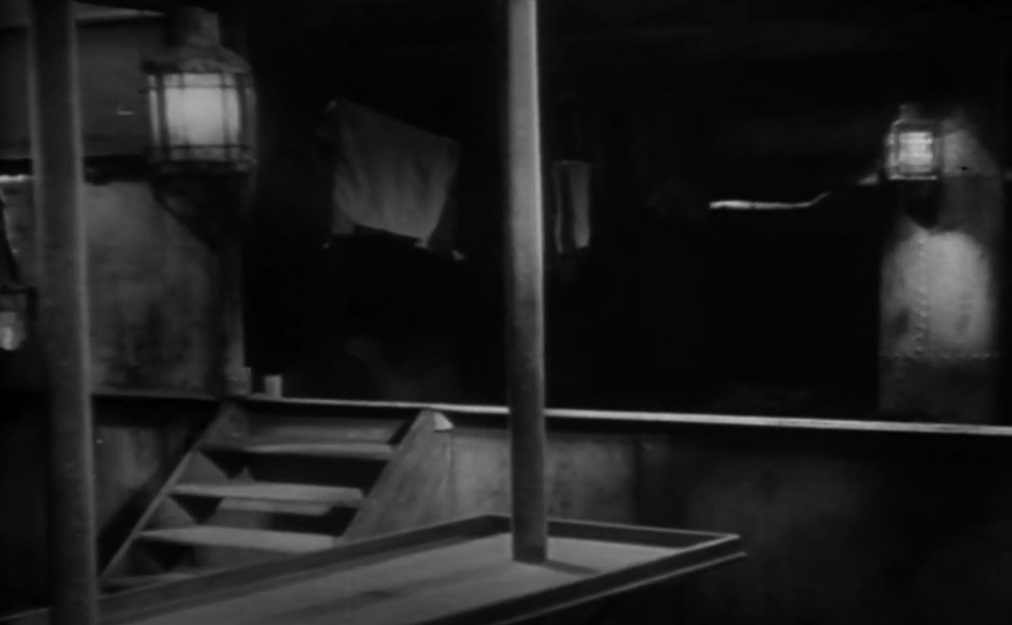 Hammer, The Mystery of the Mary Celeste (1935)
Hammer, The Mystery of the Mary Celeste (1935)
Missing Paperwork
While there were some personal belongings left, most of the ship’s papers were missing, along with the captain's navigational instruments.
Aside from weather damage, there was no evidence of a struggle. Galley equipment was neatly stowed away, and there was no sign that food had been left unprepared. There was also no indication of fire or violence.
Basically, everything had been in order when the crew seemingly took the lifeboat and left—so, what caused their departure?
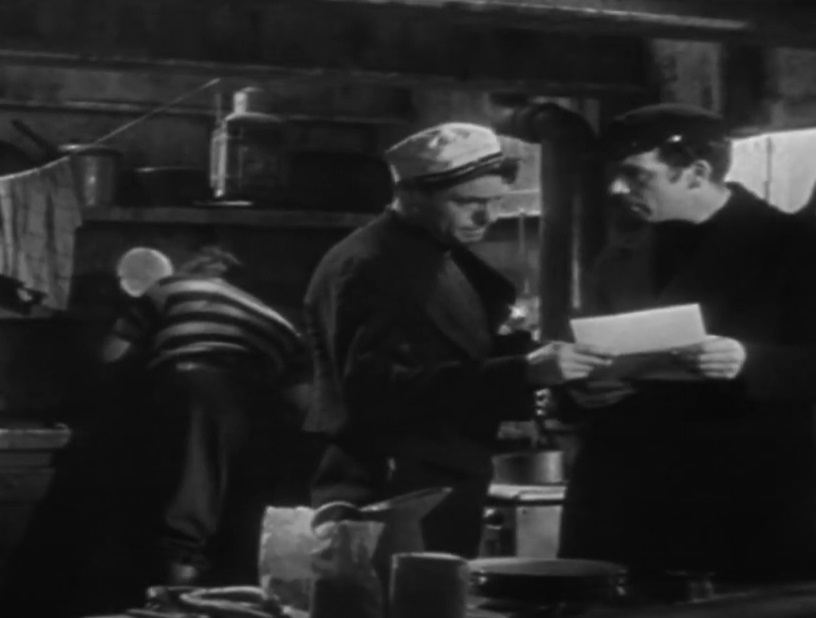 Hammer, The Mystery of the Mary Celeste (1935)
Hammer, The Mystery of the Mary Celeste (1935)
Salvaging The Wreckage
Captain Morehouse decided to bring the wreckage into Gibraltar, 600 nautical miles (1,100 km) away. It was no easy task as he had to split his crew among both ships, which slowed things down significantly.
But not only did Morehouse have a personal tie to the Mary Celeste, there was also something else motivating him to salvage the wreckage.
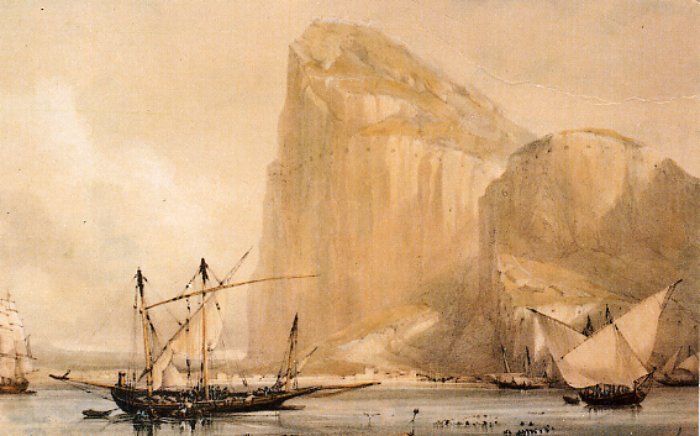 Unknown Author, Wikimedia Commons
Unknown Author, Wikimedia Commons
Financial Motivation
Under maritime law, anyone who rescues a wrecked vessel from sea could expect a substantial share of what the vessel—and its cargo—are worth. The exact amount depends on how dangerous it was to salvage the vessel.
Morehouse knew he was in for a payoff.
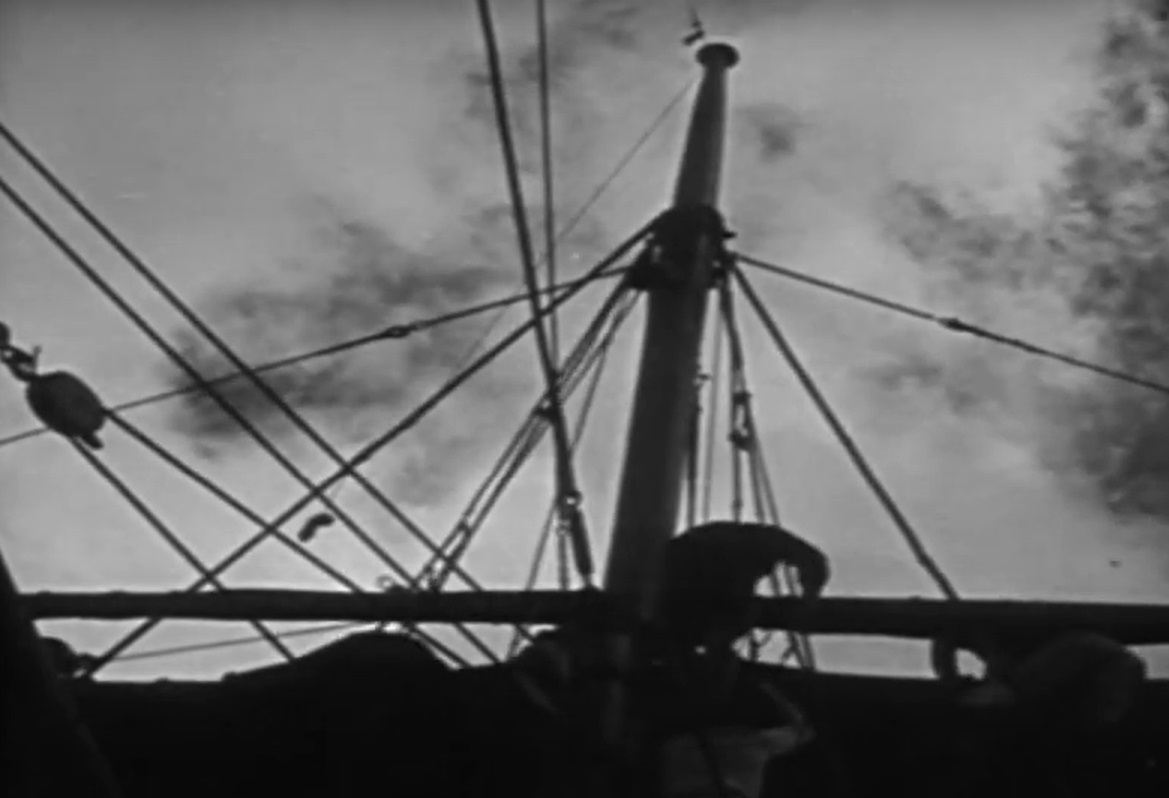 Hammer, The Mystery of the Mary Celeste (1935)
Hammer, The Mystery of the Mary Celeste (1935)
The Beginning Of The Investigations
The Mary Celeste was subjected to extensive examinations, both for court purposes so Morehouse could get the cash he was after, and also to help piece together what happened to the 11 people on board the ship.
Two professionals were called upon, and after an extensive look, they found some disturbing evidence.
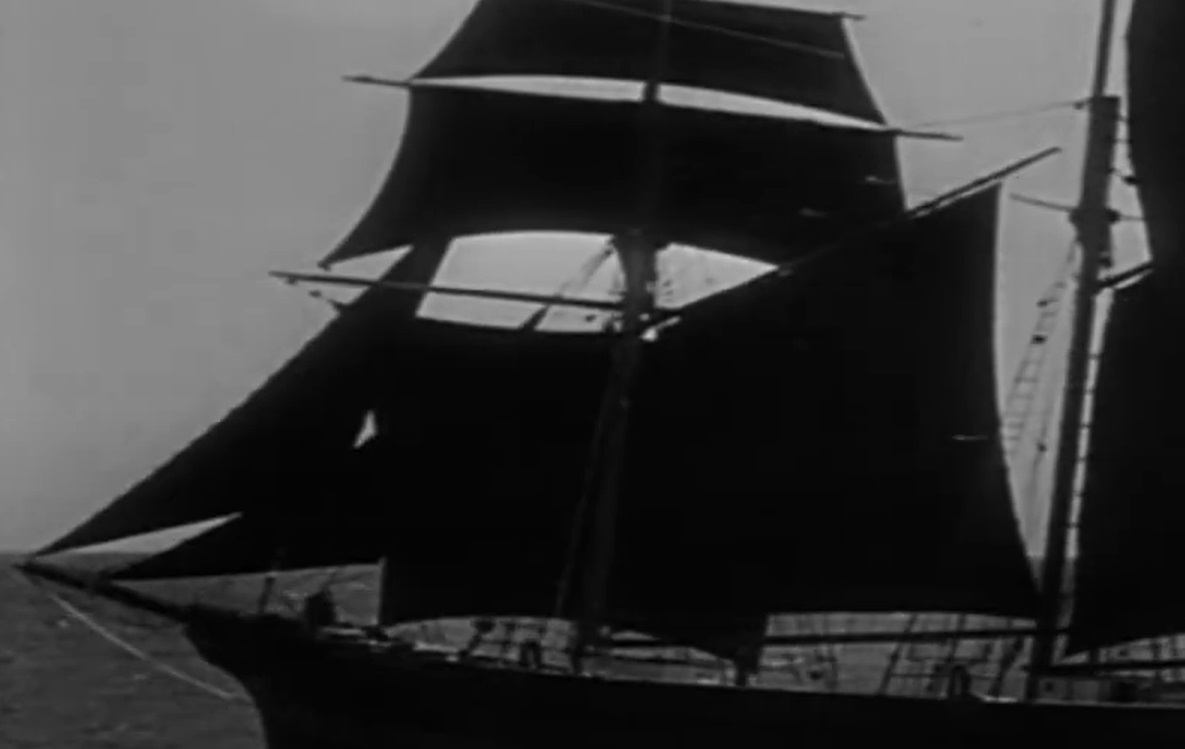 Hammer, The Mystery of the Mary Celeste (1935)
Hammer, The Mystery of the Mary Celeste (1935)
The Weather Was Not To Blame
While it was first assumed that Mary Celeste had been hit by unexpected weather, causing the wreck, there was new evidence to indicate that weather may have actually had very little to do with it.
Something much darker was at play.
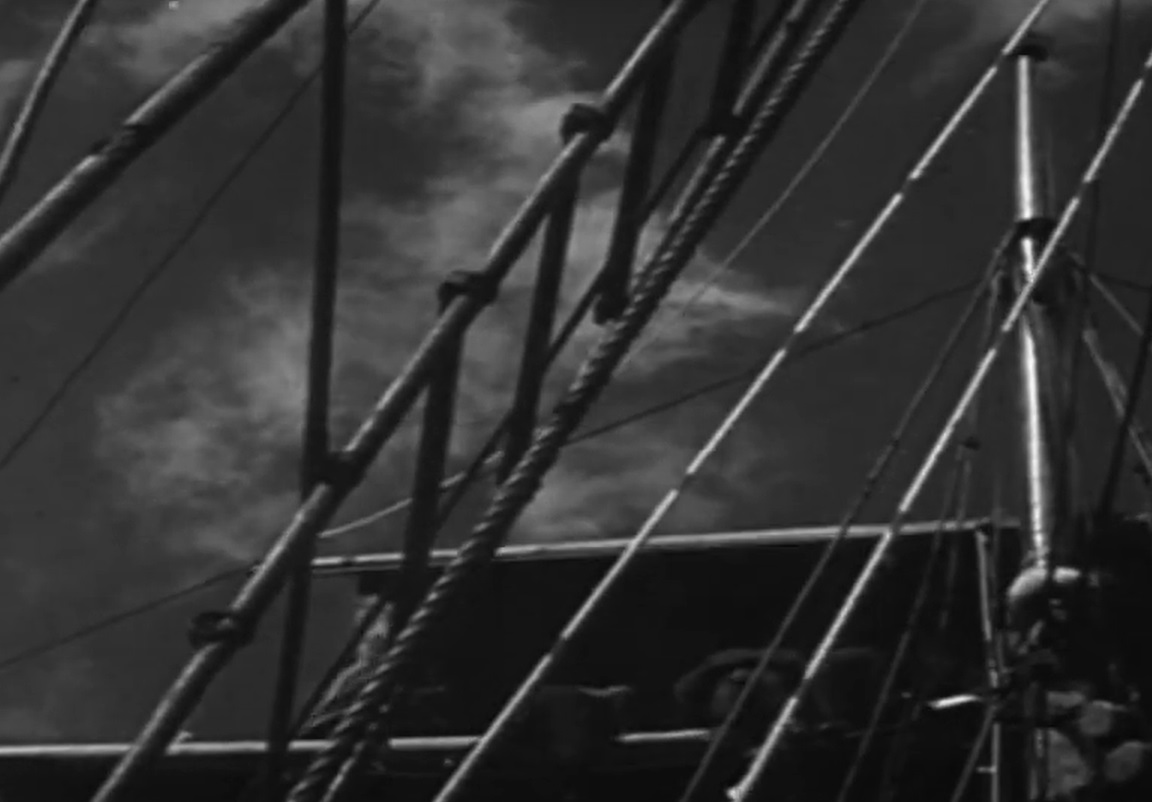 Hammer, The Mystery of the Mary Celeste (1935)
Hammer, The Mystery of the Mary Celeste (1935)
Emerging Evidence
John Austin, a well-respected Surveyor of Shipping, noted cuts on each side of the bow that were likely—and deliberately—caused by a sharp instrument.
Not only that, the captain’s sword was found under the bed—and it had traces of blood on it.
Not long later, a professional diver chimed in with his opinion as well—only adding to the dark suspicions.
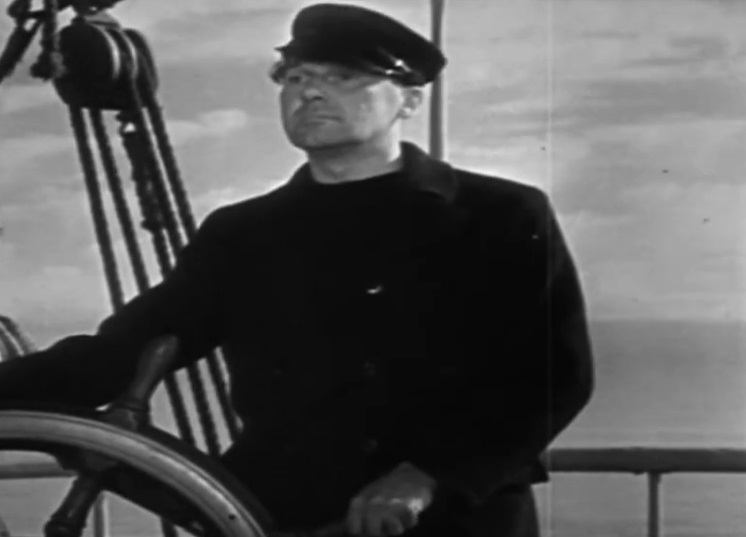 Hammer, The Mystery of the Mary Celeste (1935)
Hammer, The Mystery of the Mary Celeste (1935)
The Likelihood Of A Collision
Ricardo Portunato, a professional diver, took a closer look at the structure and determined that the ship had not been involved in a collision or run aground.
At this point, a group of Royal Naval captains were called in for further inspection—and the investigation only took them deeper down the rabbit hole.
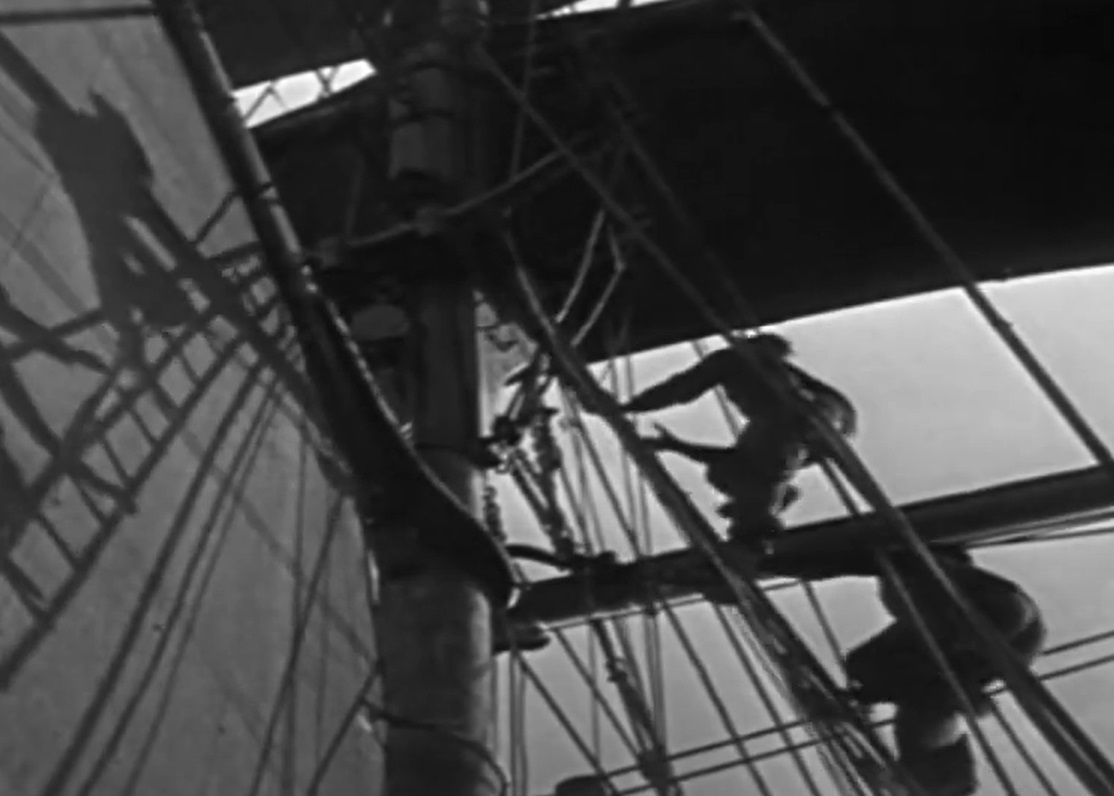 Hammer, The Mystery of the Mary Celeste (1935)
Hammer, The Mystery of the Mary Celeste (1935)
Human Wrongdoing
The Royal Naval captains confirmed that the cuts to the bow were done intentionally. They also discovered stains on one of the ship's rails that might have been blood, together with a deep mark possibly caused by an ax.
Evidence was now pointing to “human wrongdoing” as opposed to natural disaster. But what exactly did that mean?
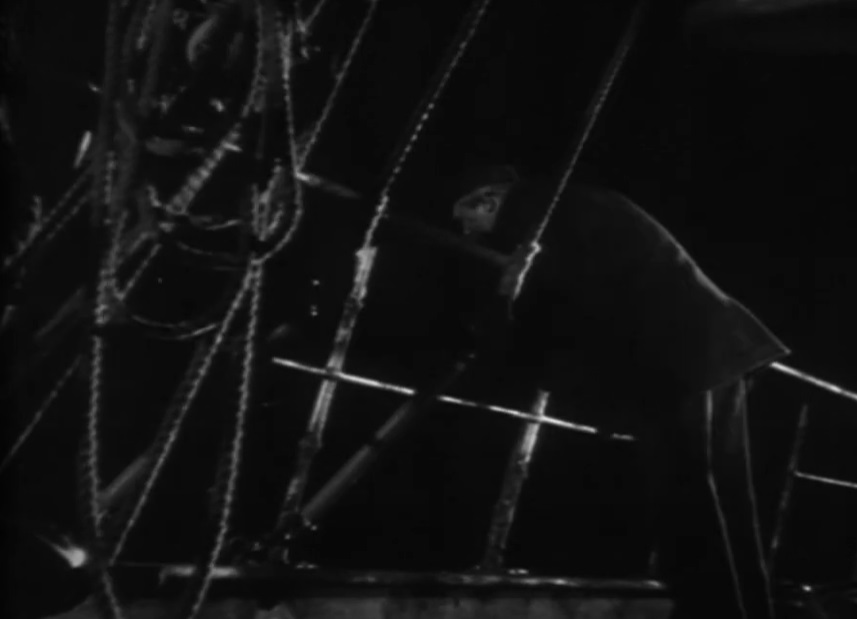 Hammer, The Mystery of the Mary Celeste (1935)
Hammer, The Mystery of the Mary Celeste (1935)
But Where Is My Money?
A month later, Winchester—the big player in Mary Celeste’s ownership history, and a close relation to some of the crew members aboard the ship at the time of its disappearance—started asking when the ship would be released to finally deliver her cargo. He was apparently concerned with the payment schedule.
But authorities felt something fishy was going on.
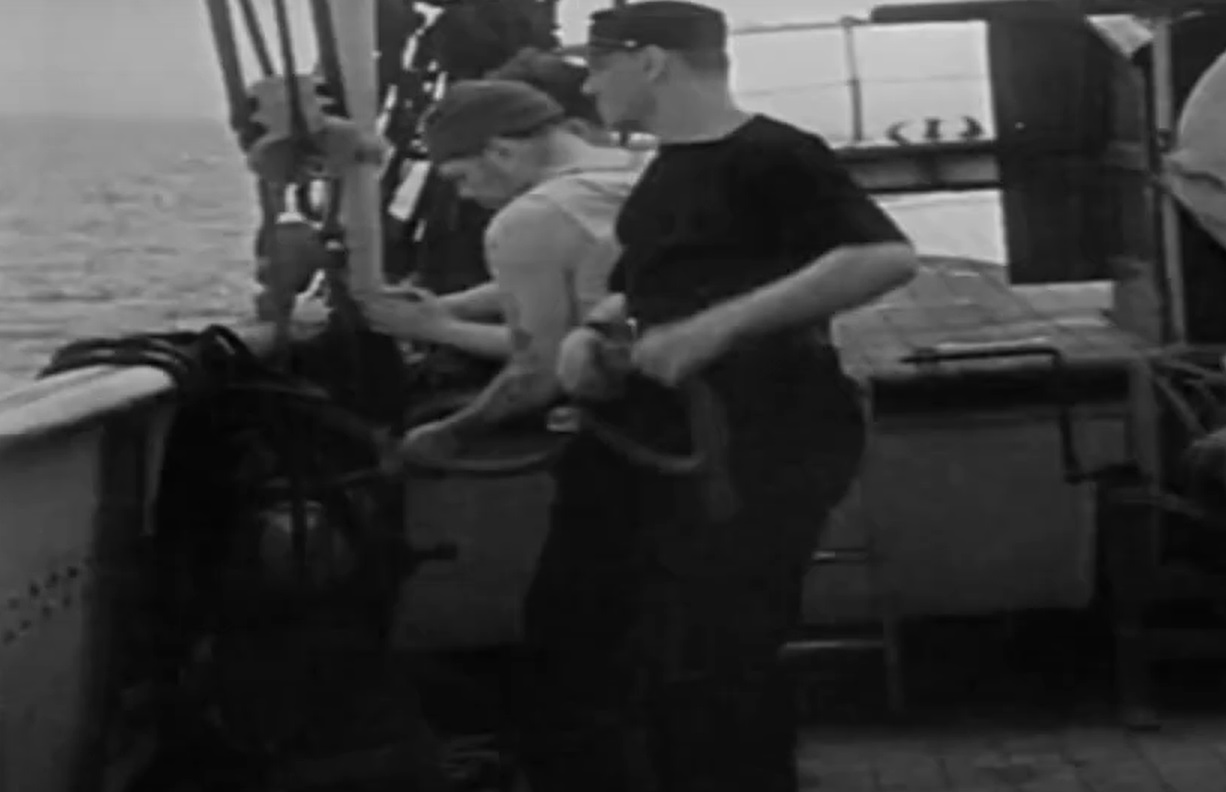 Hammer, The Mystery of the Mary Celeste (1935)
Hammer, The Mystery of the Mary Celeste (1935)
The First Suspect
Authorities believed that Winchester may have had something to do with the disappearance of Mary Celeste’s crew.
Actually, they went as far as believing that he may have even had Briggs and his crew killed as part of some conspiracy.
But it doesn’t end there.
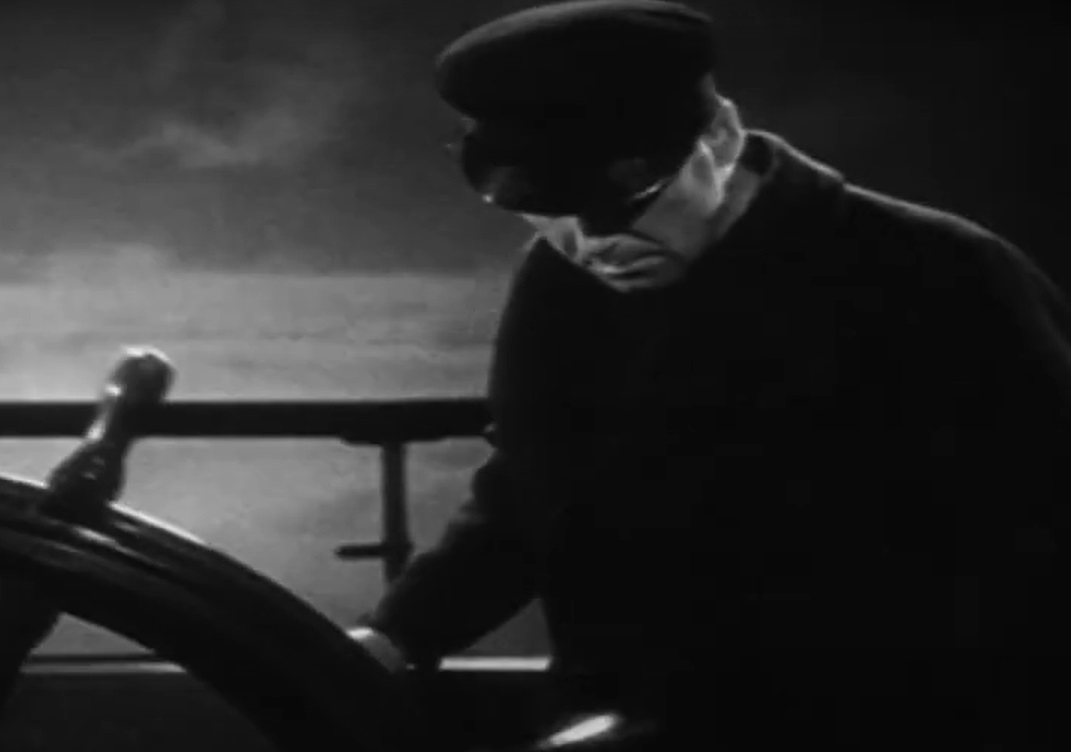 Hammer, The Mystery of the Mary Celeste (1935)
Hammer, The Mystery of the Mary Celeste (1935)
Winchester’s Defense
Winchester adamantly claimed he was not responsible. He even spoke highly of Briggs’ character, stating that Briggs would not have abandoned the ship without good reason.
And after various reports indicating that foul play was most likely, authorities were suddenly given new information that completely threw them for a loop—and everything changed.
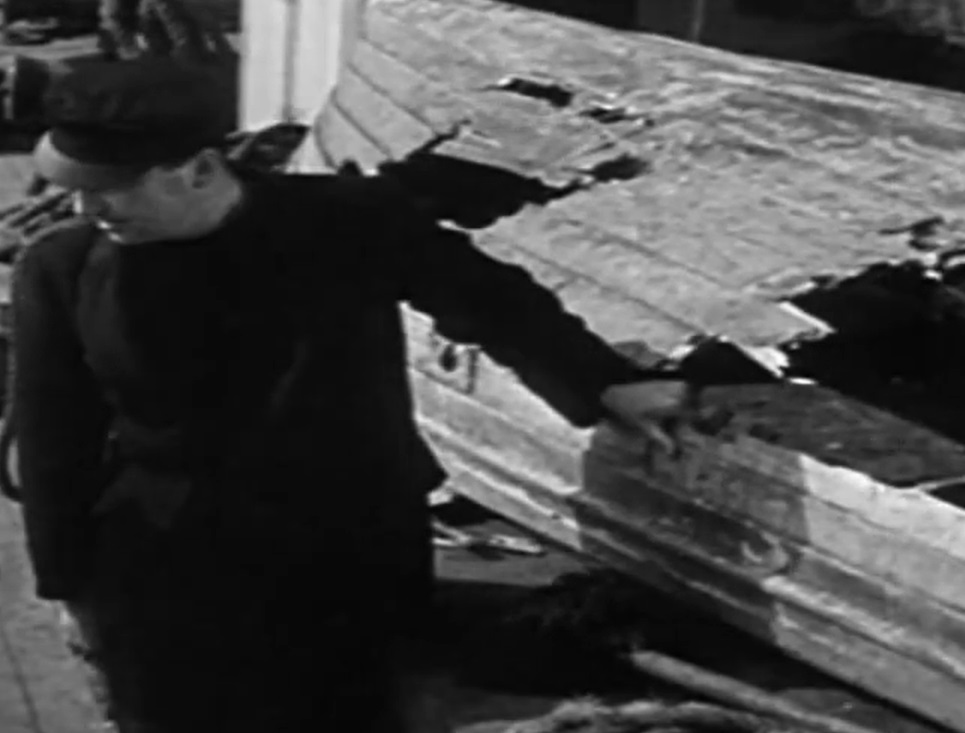 Hammer, The Mystery of the Mary Celeste (1935)
Hammer, The Mystery of the Mary Celeste (1935)
Oops, They Were Wrong
All of a sudden, scientific analysis surfaced claiming that the stains found on the sword and elsewhere on the ship were not actually blood after all.
On top of that, a report then stated that the marks on the bow were not man-made, but came from “the natural actions of the sea”.
Authorities were back at square one, and had no choice but to surrender the wreckage to the greedy captains waiting for their payouts.
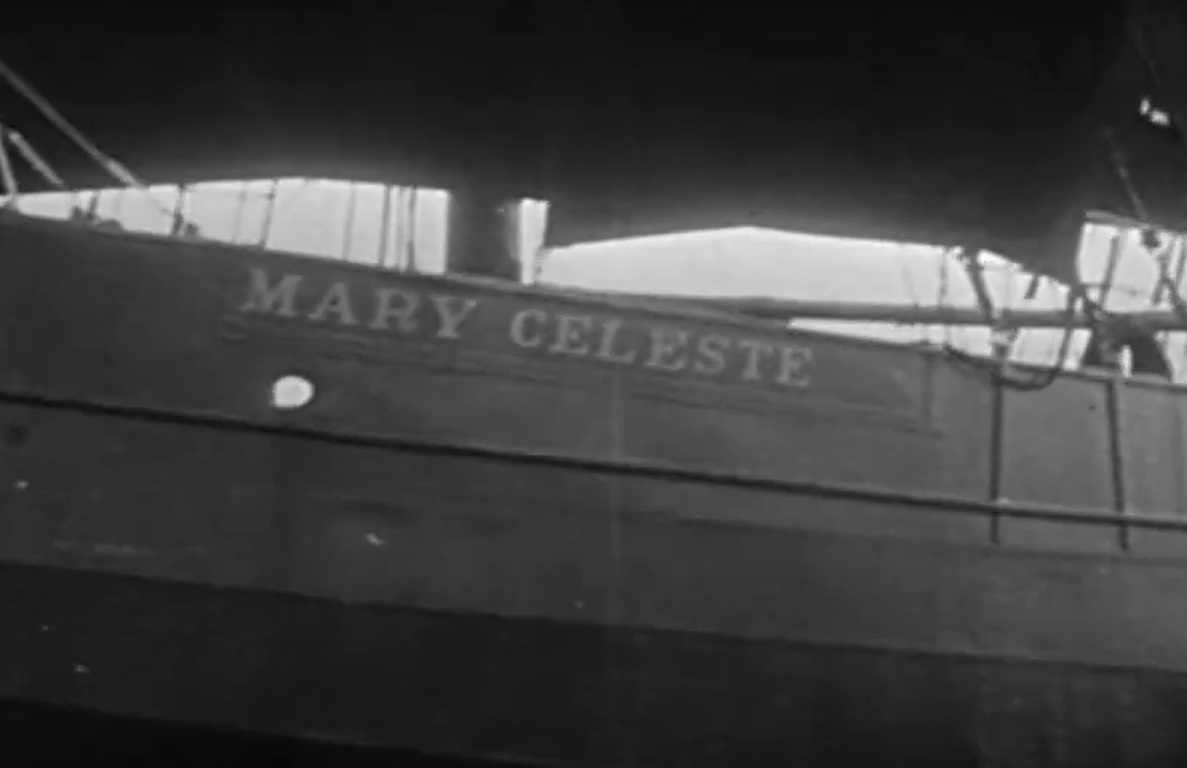 Hammer, The Mystery of the Mary Celeste (1935)
Hammer, The Mystery of the Mary Celeste (1935)
The Payout
A couple months later, the courts made their decision about the salvage payment—and it was much less than most were expecting. The award totaled £1,700, which was about one-fifth of the total value of the ship and cargo.
The reason for the stingy payout though, was equally as unexpected.
The Decision
The court wasn’t impressed by Captain Morehouse’s decision to still deliver Mary Celeste’s cargo of petroleum during the time of the court hearings. Finding this behavior questionable, the court gave Morehouse a harsh warning.
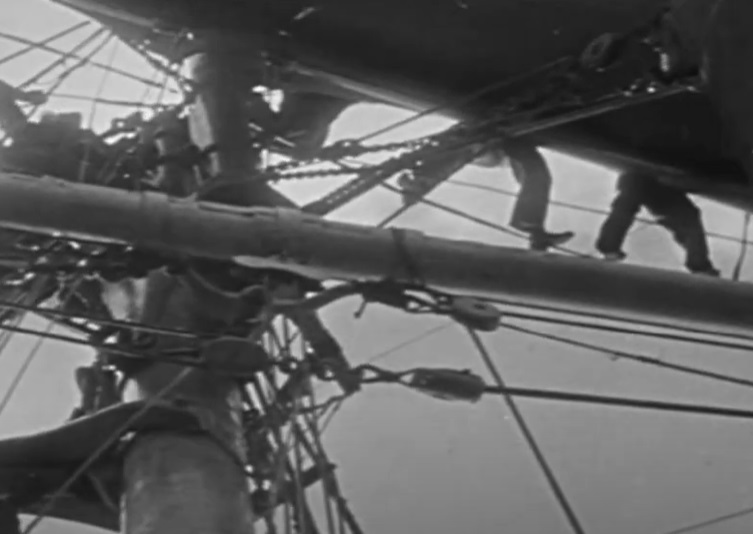 Hammer, The Mystery of the Mary Celeste (1935)
Hammer, The Mystery of the Mary Celeste (1935)
The Reason
The court implied that what Morehouse did was not only wrong, but also connected to a suspicious and unsettling motive. The judge ensured that Morehouse and his crew “would be under suspicion in the court of public opinion forever”.
And while evidence failed to support theories of foul play, the suspicion lingered.
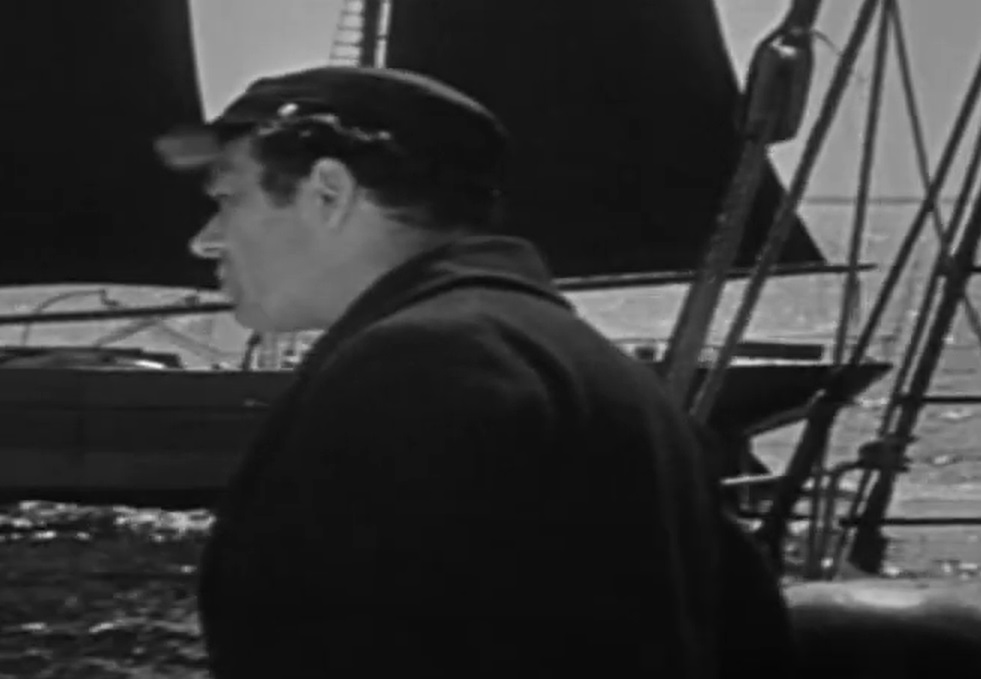 Hammer, The Mystery of the Mary Celeste (1935)
Hammer, The Mystery of the Mary Celeste (1935)
Financially Motivated Theories
It didn’t take long for newspapers and locals to start talking. It’s not often that a shipwreck occurs with a vanishing crew.
The next theory that surfaced was also financially motivated.
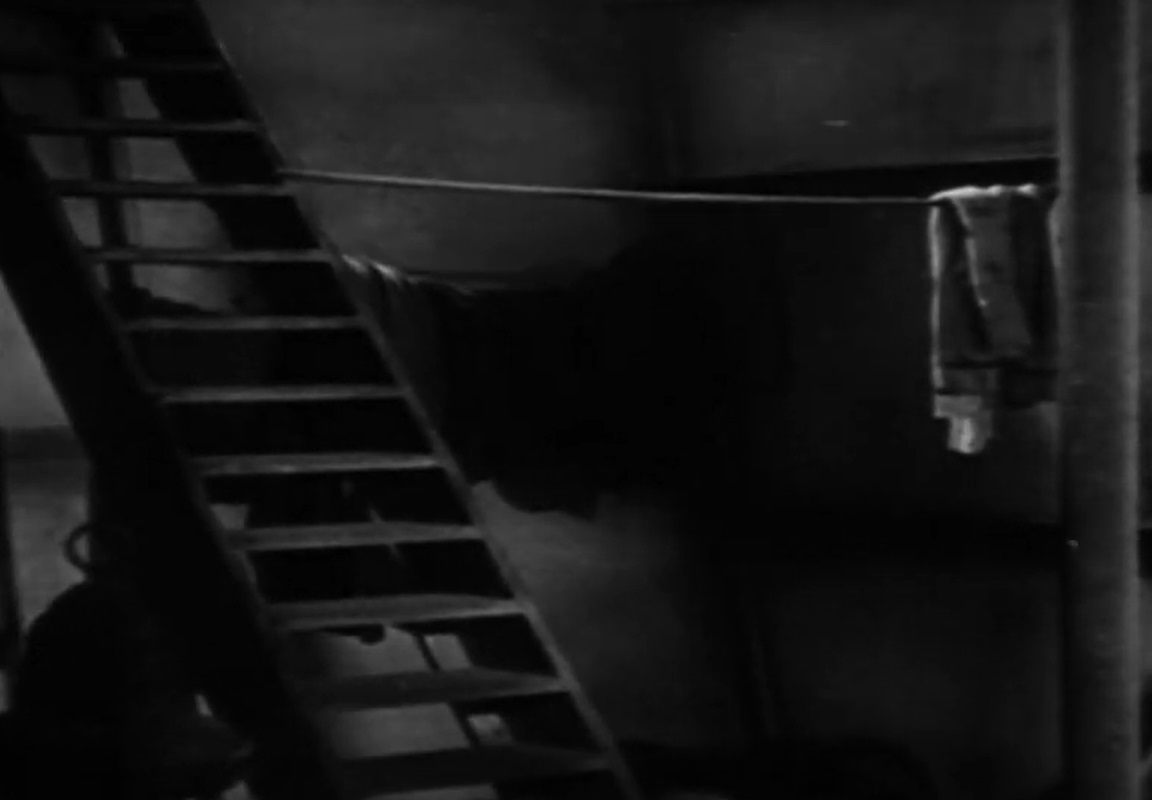 Hammer, The Mystery of the Mary Celeste (1935)
Hammer, The Mystery of the Mary Celeste (1935)
Insurance Fraud
The idea of insurance fraud was the next played out scenario. Apparently, Winchester had the Mary Celeste “heavily over-insured” at the time of the wreckage.
Was it possible that he had planned this mysterious loss with Briggs? Or was Briggs an unsuspecting player?
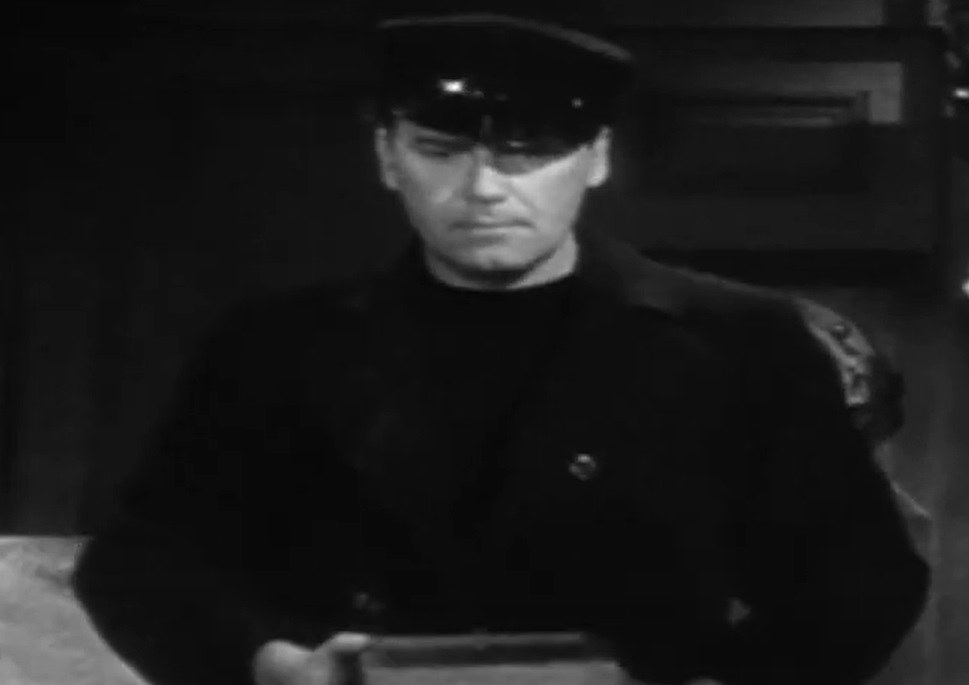 Hammer, The Mystery of the Mary Celeste (1935)
Hammer, The Mystery of the Mary Celeste (1935)
A Dead End
Winchester was able to somehow talk himself out of these allegations and the insurance companies didn’t seem too interested in looking into it any further.
Even still, the truth was out there—and someone was going to figure it out eventually.
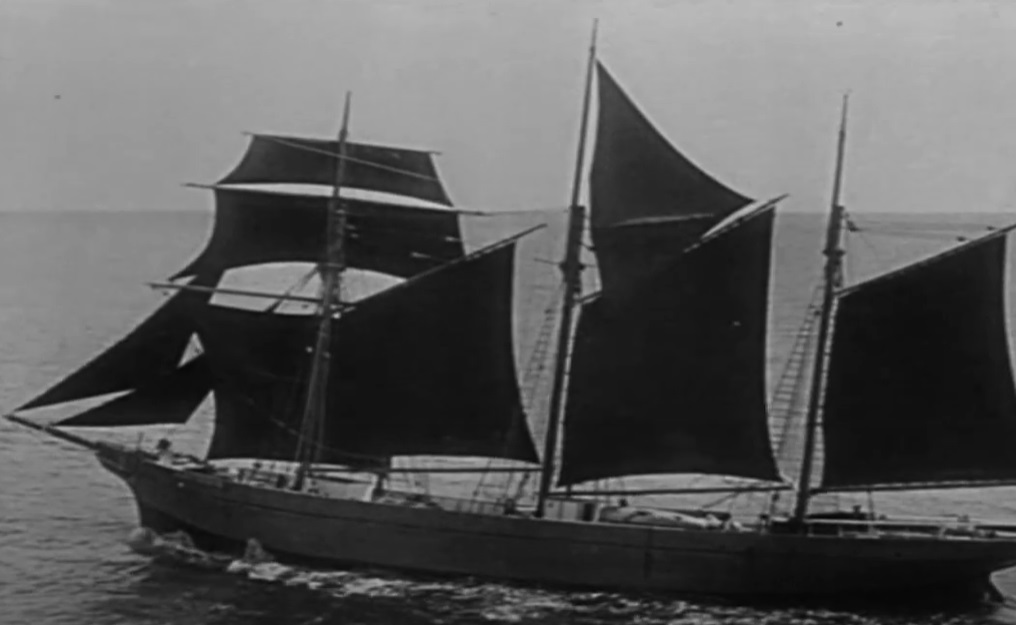 Hammer, The Mystery of the Mary Celeste (1935)
Hammer, The Mystery of the Mary Celeste (1935)
Sinister Suspects
In 1931, nearly six decades later, an article in the Quarterly Review suggested that Captain Morehouse could have set it all up—waiting for Briggs in the lonely dark waters, luring him and his crew aboard Dei Gratia, and then ending their lives there.
However, this theory had some holes, too.
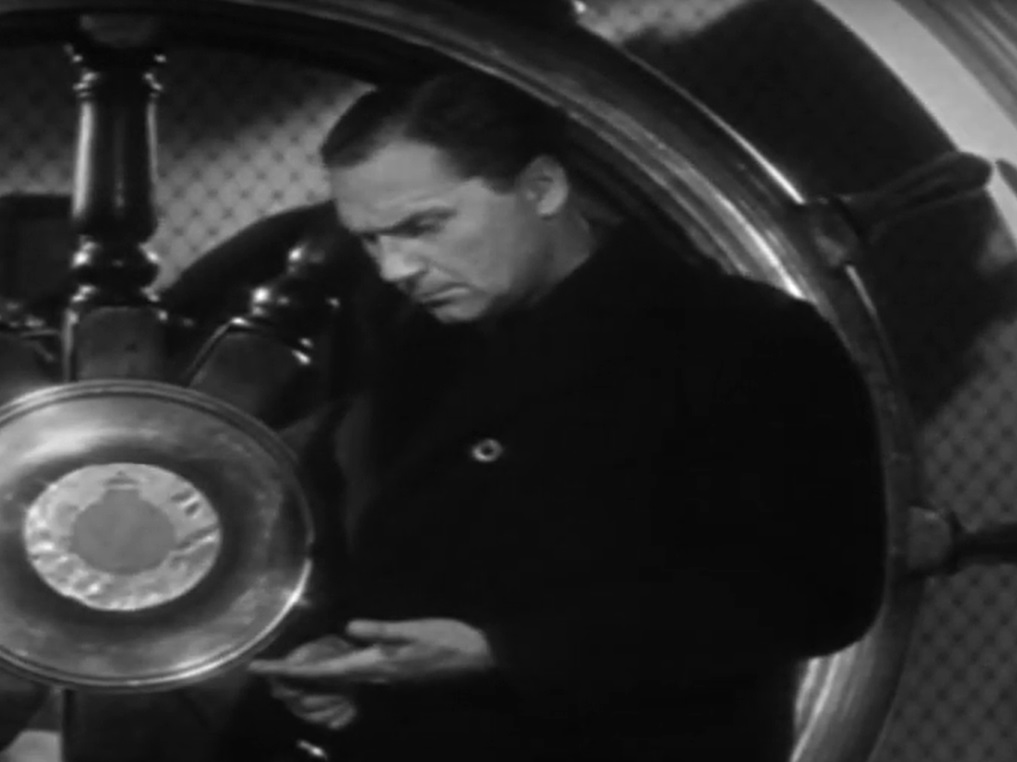 Hammer, The Mystery of the Mary Celeste (1935)
Hammer, The Mystery of the Mary Celeste (1935)
It Was Too Slow
That theory was challenged by the fact that Dei Gratia was the slower ship of the two. She left New York eight days after Mary Celeste, so it was unlikely she would have caught up to her before reaching Gibraltar.
Instead, people started to focus on relationships between the people involved—uncovering even more unexpected truths.
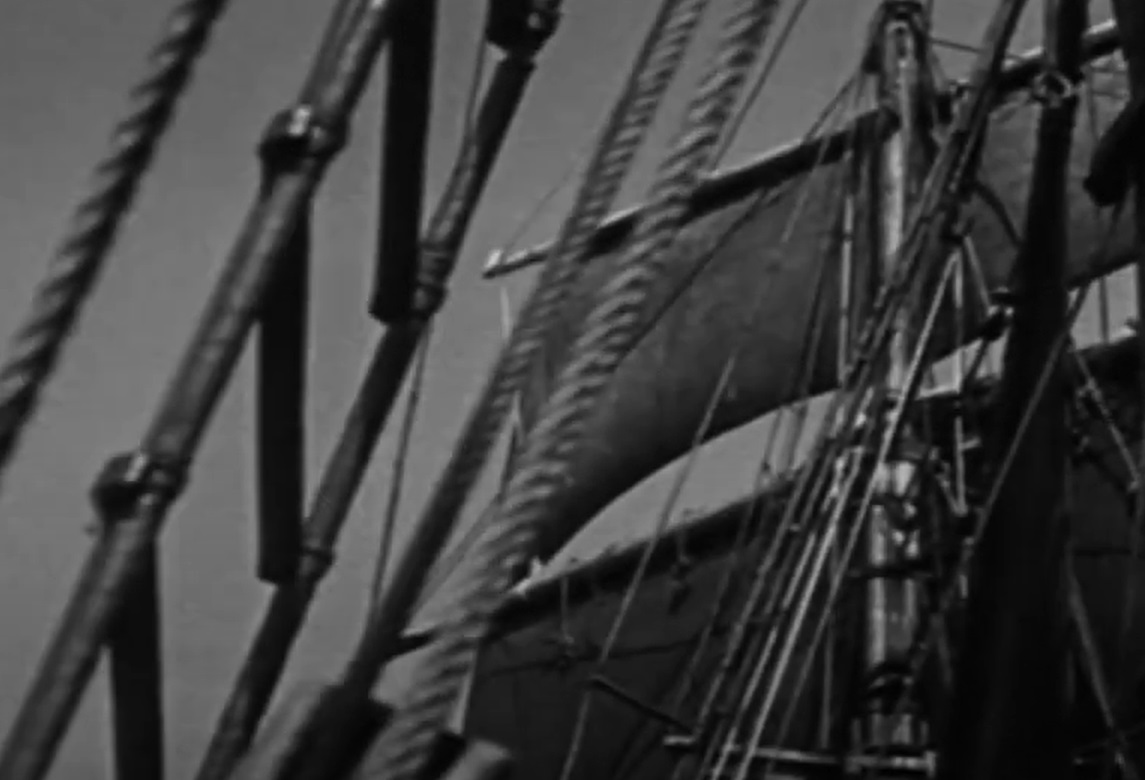 Hammer, The Mystery of the Mary Celeste (1935)
Hammer, The Mystery of the Mary Celeste (1935)
A Dark Friendship
While there was no evidence of a long-standing friendship between Briggs and Morehouse, one possibility that played in people’s minds was that the entire event was planned between the two captains, as partners in a conspiracy to share the salvage proceeds.
And while this remained a likely theory, one dark detail could not be ignored.
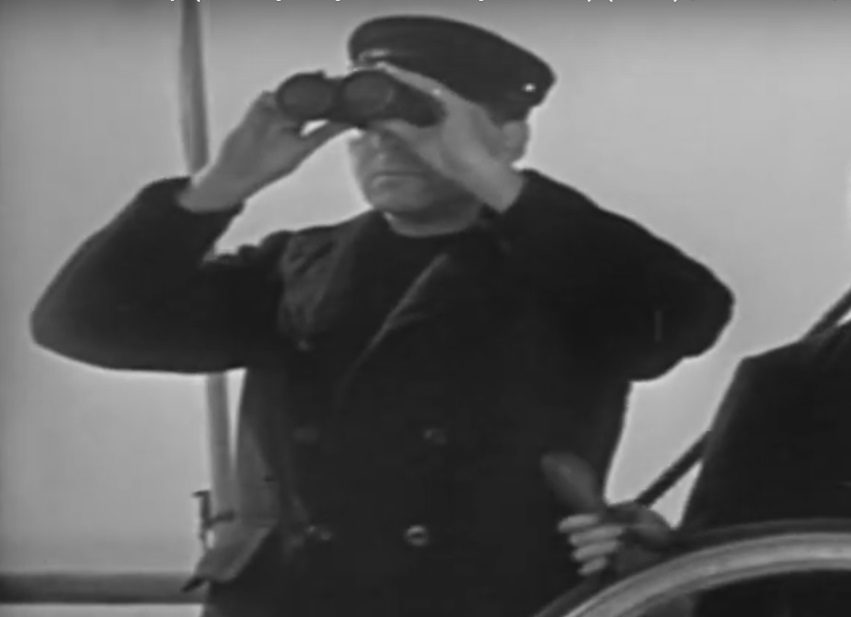 Hammer, The Mystery of the Mary Celeste (1935)
Hammer, The Mystery of the Mary Celeste (1935)
Briggs’s Son
Before Briggs left New York on Mary Celeste, he chose to bring his wife and daughter with him—but left his son behind in the care of a relative.
If he were using this incident as a way to disappear, why would he abandon his son? Not only that, some people questioned why Morehouse would create such a public mystery out of a scam.
Believe it or not, the theories did not stop there—but they were getting closer.
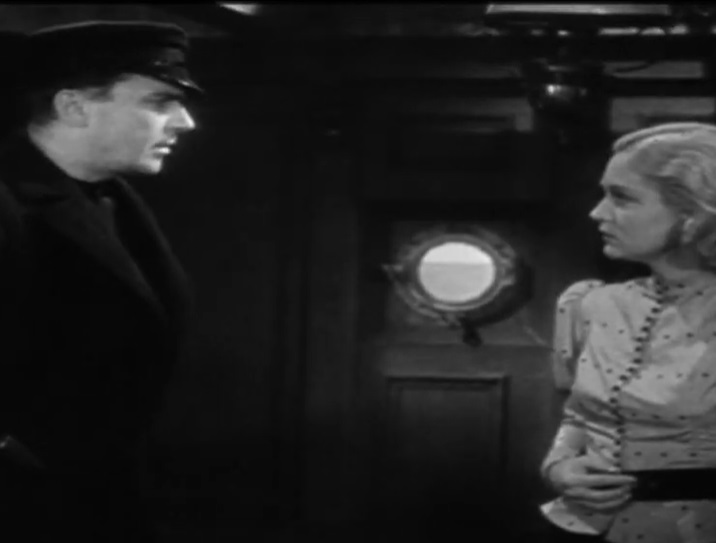 Hammer, The Mystery of the Mary Celeste (1935)
Hammer, The Mystery of the Mary Celeste (1935)
Pirates
Back in the 1870s, pirates were active off the coast of Morocco. So, the possibility of a pirate attack was not far-fetched. However, if this were the case, the pirates would not have left high-value items behind, they would have looted everything.
Captain Briggs
Theories continued to circulate about Briggs ending the lives of everyone on board, and then himself. Some now believed it was for religious reasons. But family members of those on board started to become very bothered by these accusations.
Instead, the family started doing some digging of their own.
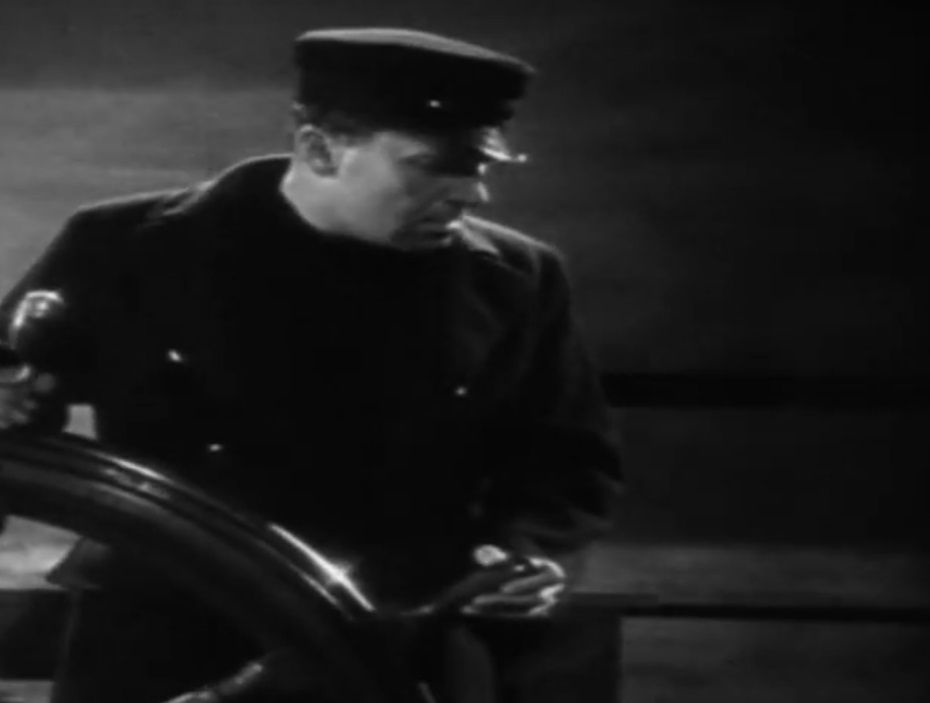 Hammer, The Mystery of the Mary Celeste (1935)
Hammer, The Mystery of the Mary Celeste (1935)
Precautionary Measures
Captain Briggs’s cousin, Oliver Cobb, spent years putting pieces together. He believed that the transfer of the occupants to the lifeboat may have been intended as a precaution.
He noted that reports from the wreckage had claimed that the lifeboat had originally been tied to the ship, possibly as refuge from some sort of danger, and with the intention of returning to the ship when safe to do so.
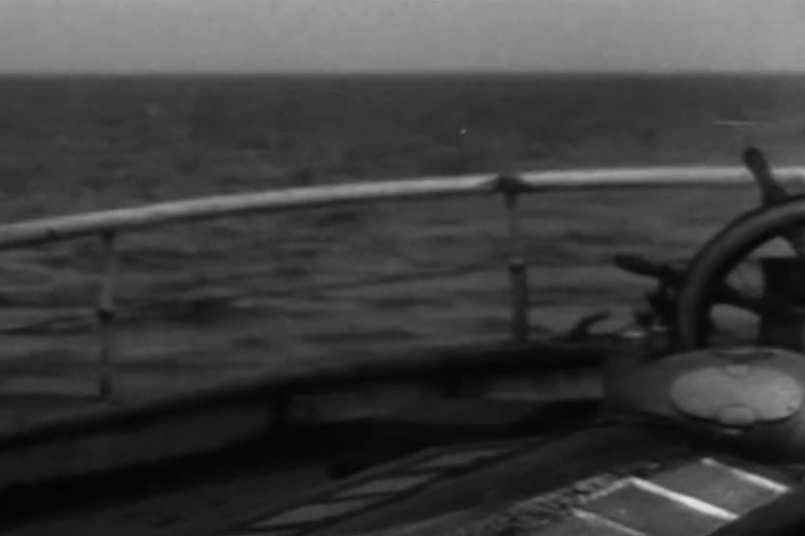 Hammer, The Mystery of the Mary Celeste (1935)
Hammer, The Mystery of the Mary Celeste (1935)
An Illogical Decision
However, others said that Mary Celeste would have sailed away empty if the line had broken, leaving the lifeboat behind with all its occupants. It was argued that this would have been illogical and Briggs would not have made this decision.
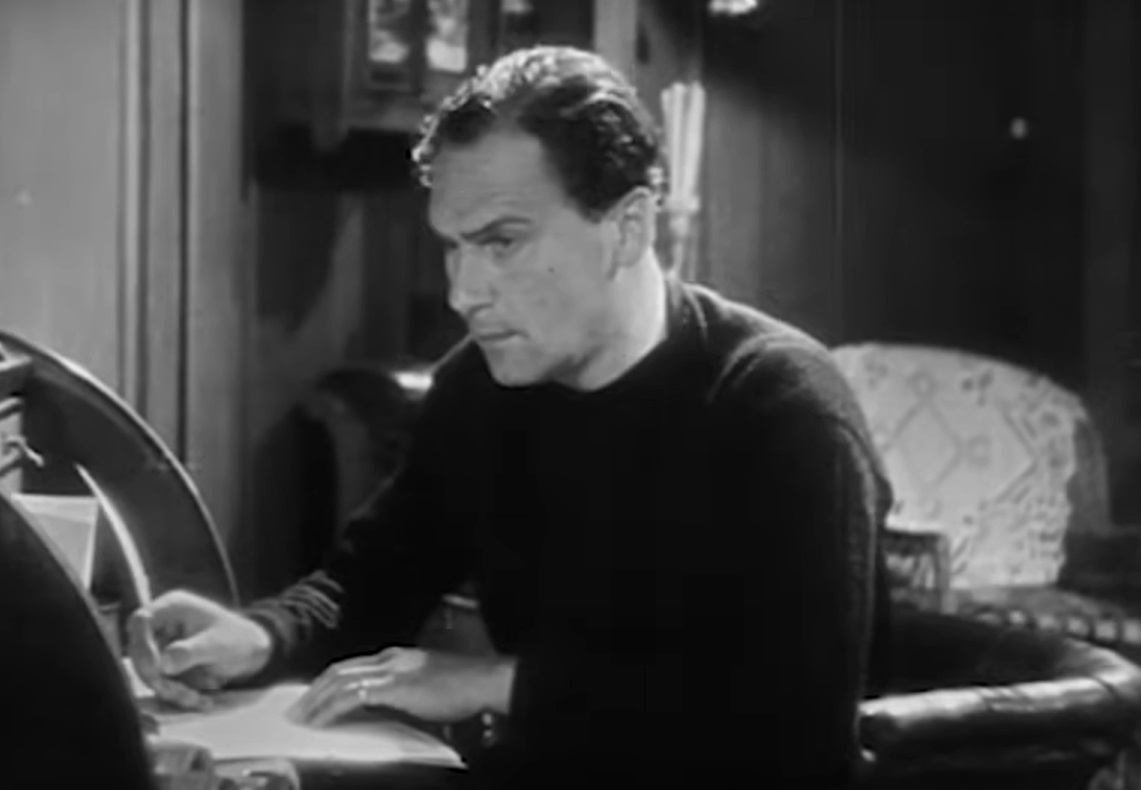 Hammer, The Mystery of the Mary Celeste (1935)
Hammer, The Mystery of the Mary Celeste (1935)
Ship Vs Lifeboat
Another person involved in the investigation, Macdonald Hastings, argued that Briggs was an experienced captain and would not have led a panicked abandonment, writing: “If the Mary Celeste had blown her timbers, she would still have been a better bet for survival than the ship's boat.”
According to Hastings, if Briggs relied on the lifeboat for survival rather than the ship, he “behaved like a fool; worse, a frightened one".
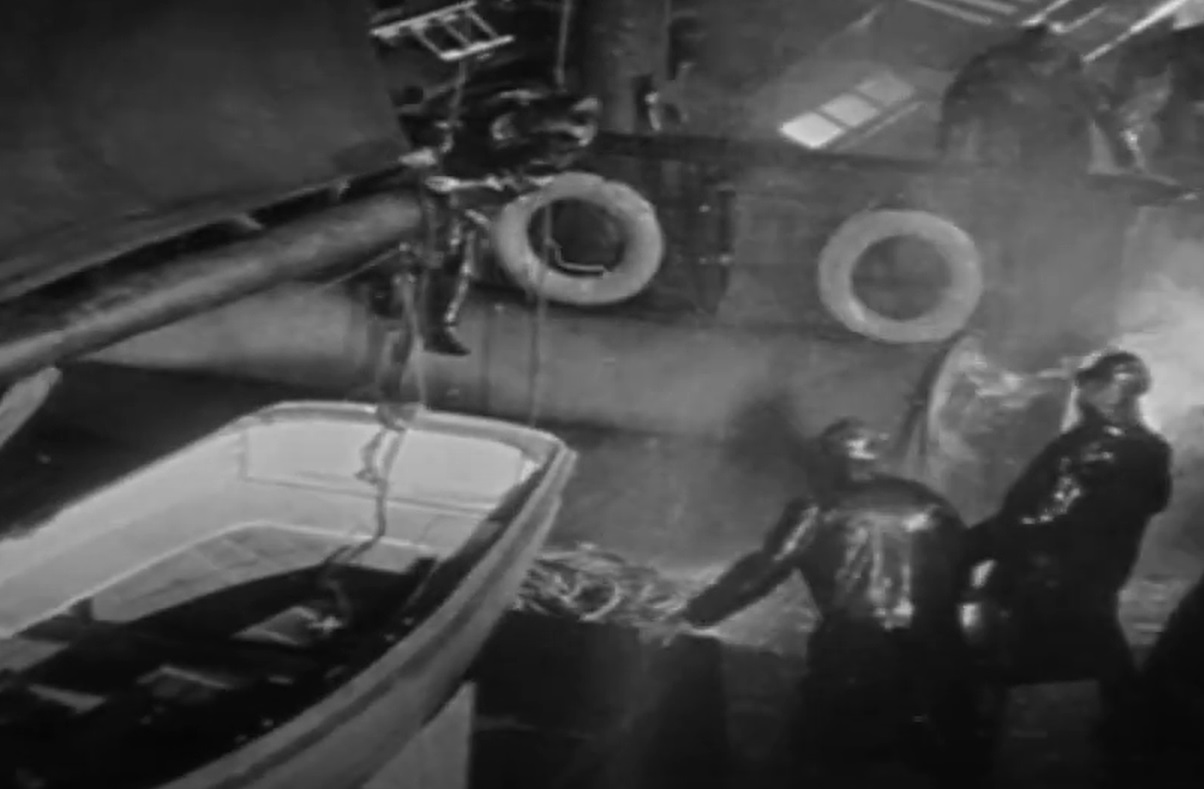 Hammer, The Mystery of the Mary Celeste (1935)
Hammer, The Mystery of the Mary Celeste (1935)
The Lifeboat Rope
Arthur N Putman, a New York insurance appraiser, was a leading investigator in sea mysteries in the early 20th century and wrote a similar lifeboat theory stressing that only a single lifeboat was missing from the vessel.
He had discovered that the lifeboat’s rope was cut, not untied—indicating a quick departure.
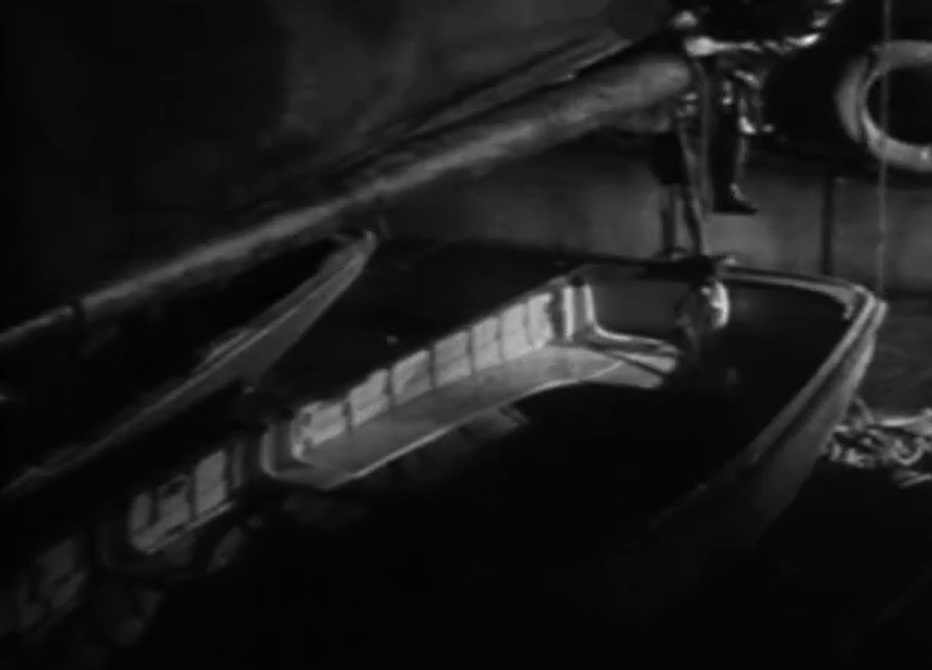 Hammer, The Mystery of the Mary Celeste (1935)
Hammer, The Mystery of the Mary Celeste (1935)
Explosions Down Below
Putman also discovered that the ship's log contained several mentions of ominous rumbling and small explosions from the hold—which isn’t exactly uncommon for cargos of alcohol since they naturally emit explosive gas.
Instead, a more intense explosion likely took place.
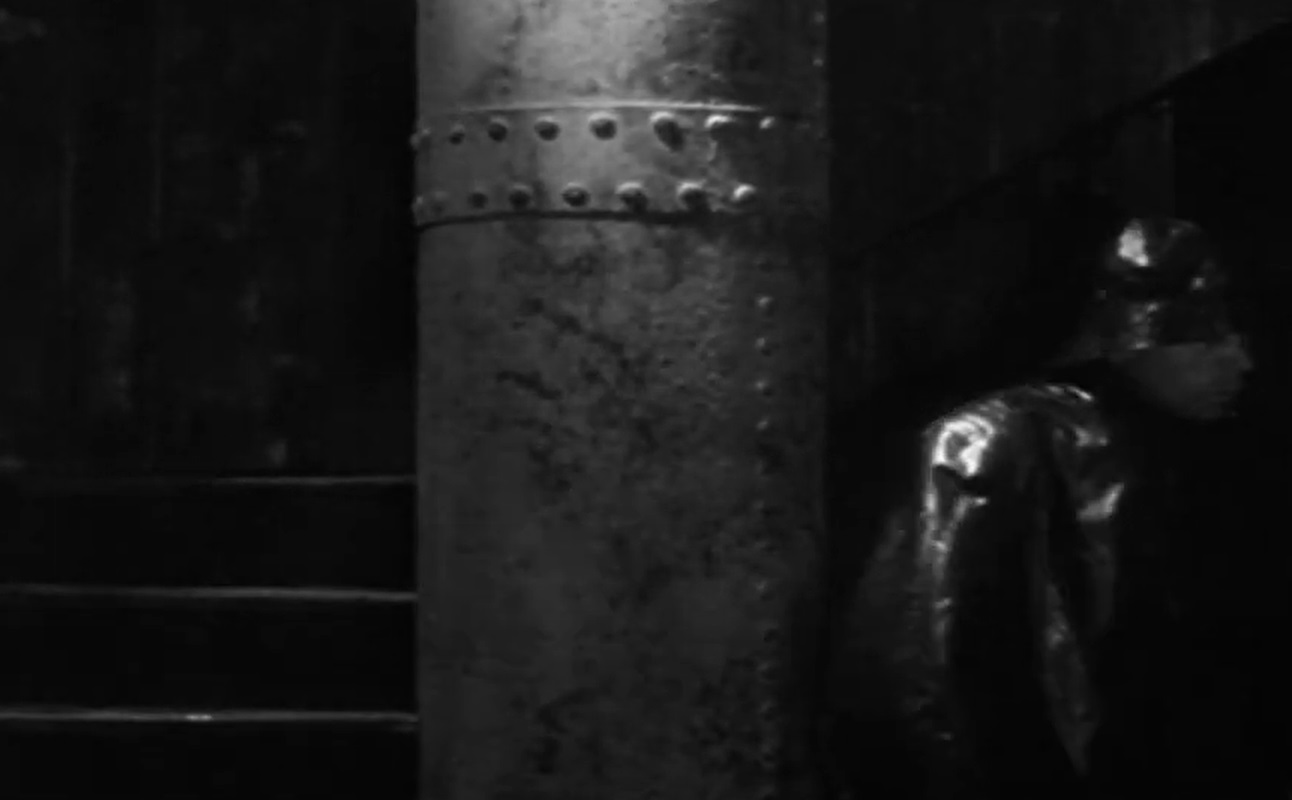 Hammer, The Mystery of the Mary Celeste (1935)
Hammer, The Mystery of the Mary Celeste (1935)
The Quick Departure
Putman theorized that an explosion may have occurred below, and a crew member had ventured down to investigate—possibly with an open flame or lit cigar—causing a larger explosion that was violent enough to dislodge the top of the hatch.
In a panic, Briggs loaded everyone into the lifeboat, cut the rope, and abandoned Mary Celeste.
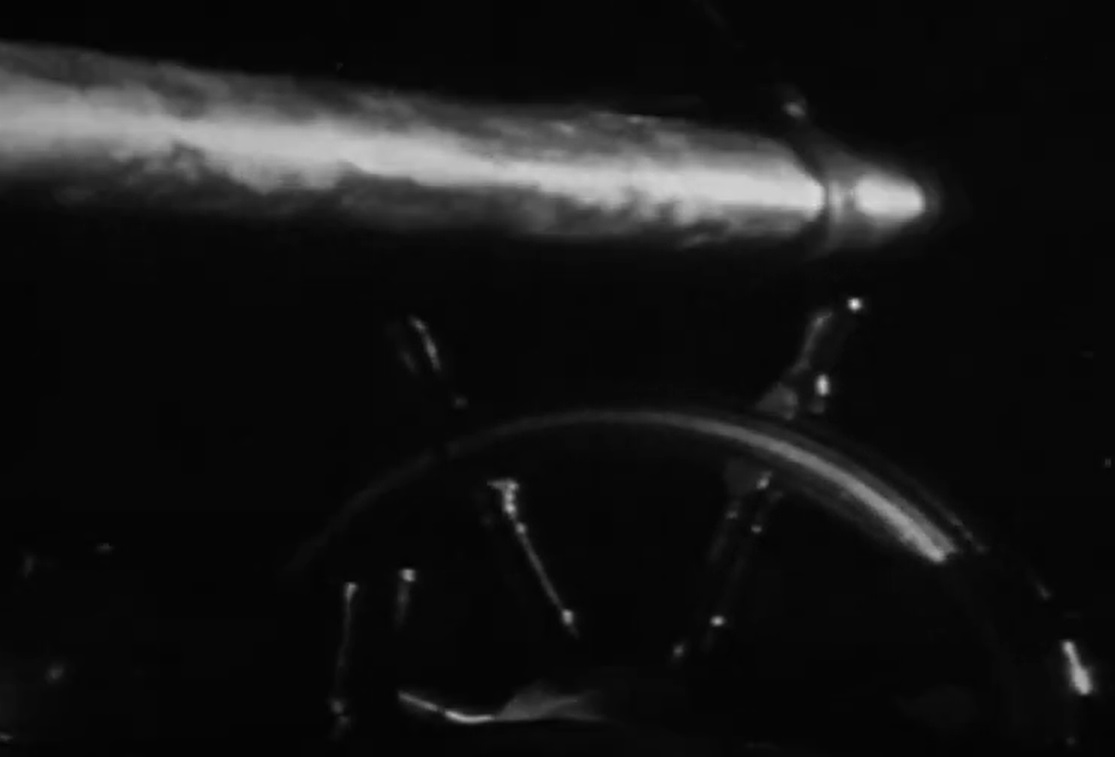 Hammer, The Mystery of the Mary Celeste (1935)
Hammer, The Mystery of the Mary Celeste (1935)
The Proof
While the explosion seems very likely, proving it was challenging. In the meantime, people started coming up with other theories—now putting the focus on nature.
It was widely agreed that some extraordinary and alarming circumstance must have arisen to cause the entire crew to abandon a sound and seaworthy ship.
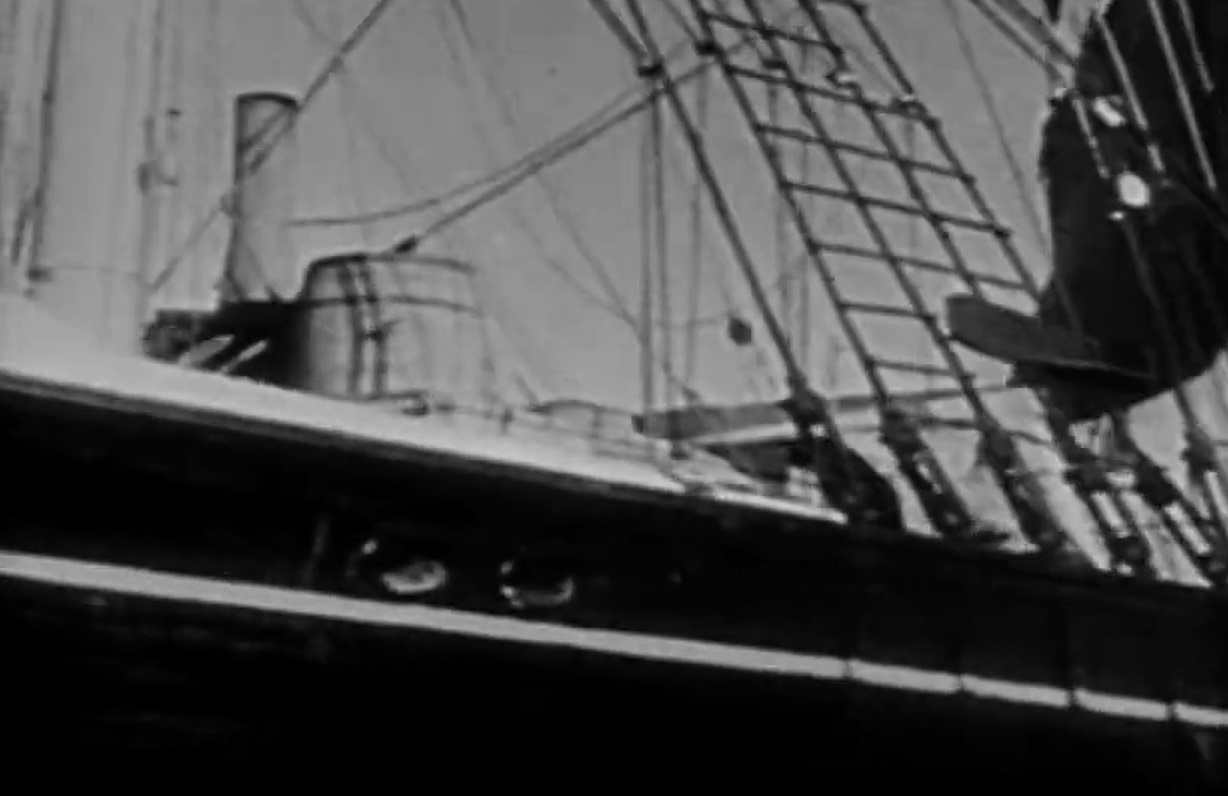 Hammer, The Mystery of the Mary Celeste (1935)
Hammer, The Mystery of the Mary Celeste (1935)
Waterspouts
In the earliest report of the wreckage, it was suggested that Briggs abandoned ship after a false sounding because of a malfunction, possibly of the pumps, that created a false impression that the ship was rapidly accumulating water.
A severe waterspout strike before the abandonment could explain the amount of water in the ship and the ragged state of her rigging and sails.
The crew may have believed Mary Celeste was in danger of sinking.
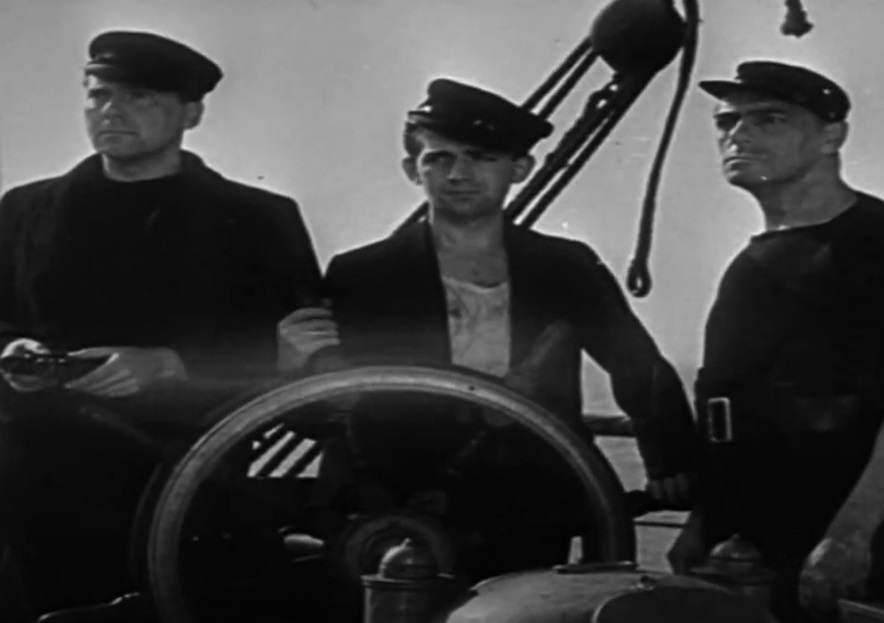 Hammer, The Mystery of the Mary Celeste (1935)
Hammer, The Mystery of the Mary Celeste (1935)
An Iceberg
Another theory included the appearance of a displaced iceberg—but hydrographical evidence suggests that an iceberg drifting so far south was improbable and other ships would have seen it.
The Reef
Another theory involved a reef, saying that the Mary Celeste may have begun drifting towards the Dollabarat reef off Santa Maria Island when she got stuck. In fear of the ship running aground, Biggs launched the lifeboat in hopes of reaching land.
At that point, the wind could have blown the ship away, leaving the lifeboat to be swallowed up by the sea.
However, the fact that the ship was found with its sails furled debunks this theory as well.
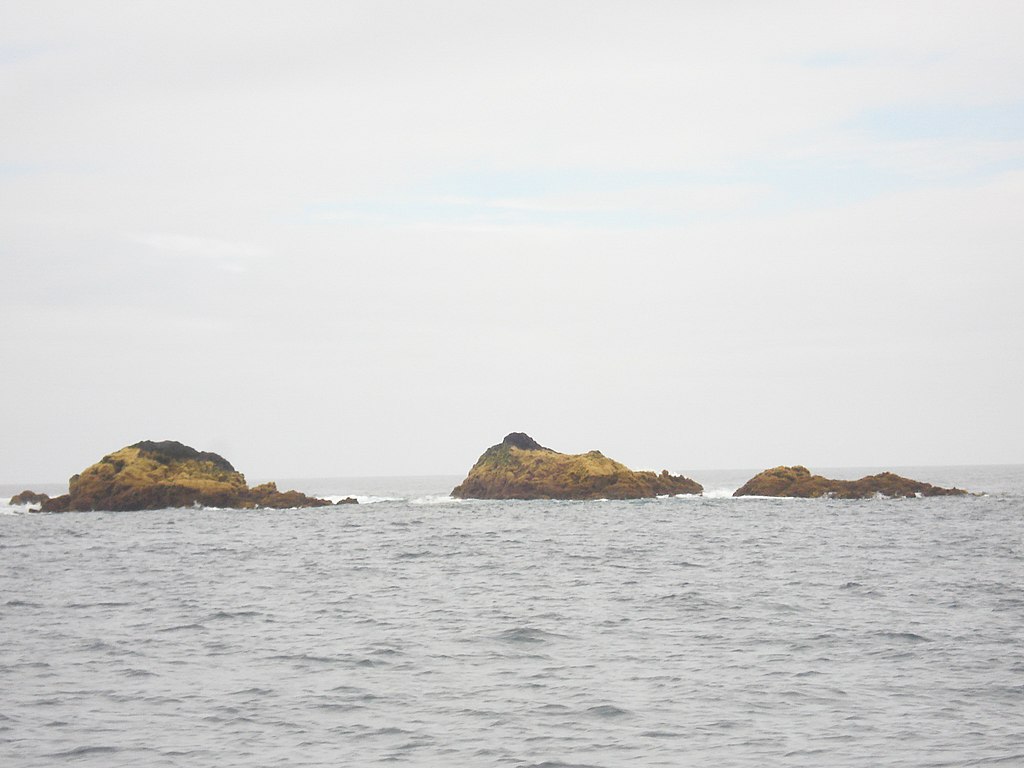 Ruben JC Furtado, Wikimedia Commons
Ruben JC Furtado, Wikimedia Commons
An Earthquake
Another possibility is that an earthquake on the seabed could have caused turbulence on the surface that damaged parts of Mary Celeste’s cargo, thus releasing noxious fumes. In fear of an imminent explosion, Briggs abandoned the ship.
The displaced hatches suggest that an inspection, or an attempted airing, had taken place—so this theory could be closer.
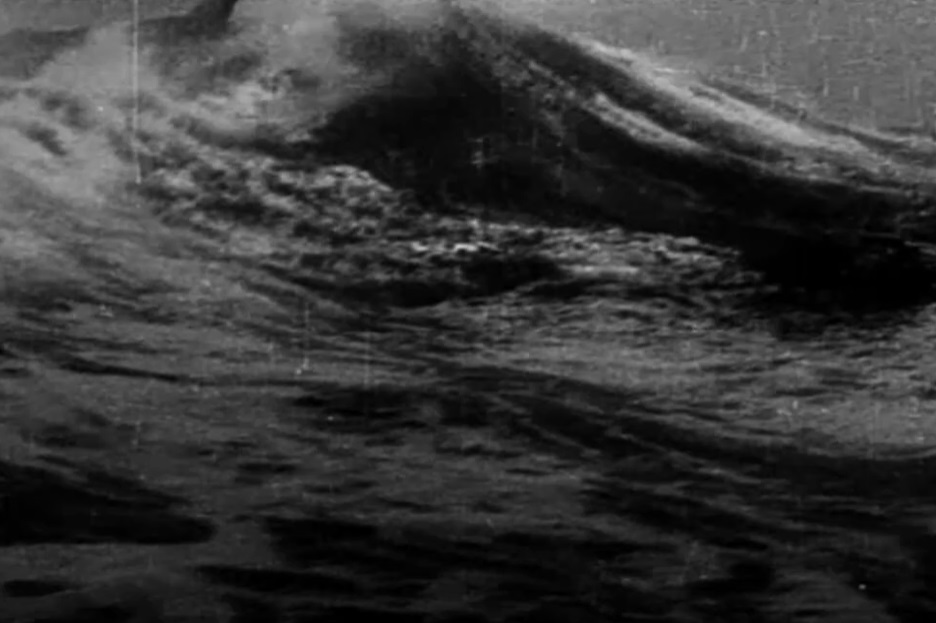 Hammer, The Mystery of the Mary Celeste (1935)
Hammer, The Mystery of the Mary Celeste (1935)
The Experiment
Years passed with no definitive answer to what happened to the Mary Celeste, or her occupants. But in 2006, an experiment was performed for Channel Five television by Chemist Andrea Sella of University College, London, and the results helped to revive the explosion theory—especially the part about there being a lack of evidence.
 The Royal Institution, CC BY 3.0, Wikimedia Commons
The Royal Institution, CC BY 3.0, Wikimedia Commons
The Result
Sella built a model of the hold, with paper cartons representing the barrels. Using butane gas, he created an explosion that caused a considerable blast and ball of flame—and believe it or not, there was no fire damage within the hold of the replica.
The Explanation
Sella explained what happened: “What we created was a pressure-wave type of explosion. There was a spectacular wave of flame but, behind it, was relatively cool air. No soot was left behind and there was no burning or scorching".
Could this have been what really happened to the Mary Celeste?
Circulating Myths
Over the years, there had been many retellings of the mysterious event, but many of them were completely fabricated, used incorrect names, terms, and even dates and ages.
Some stories were so ridiculous they included the crew being picked off one-by-one by a giant octopus, or the entire crew going for a swim at the same time and then being eaten by sharks.
Imaginations went wild, emotions ran high, and the truth was impossible to find. What’s more, you still haven’t heard the whole story, yet.
Circling Back To 1873
What happened back in 1873, after Mary Celeste was surrendered for the pay outs? Well, she was riddled with stories of bloodshed and slayings, and was no longer a popular or wanted ship.
She was quickly sold, at a considerable loss, to two businessmen in New York. The ship sailed short routes, and regularly lost money.
But the tragedy isn’t over yet.
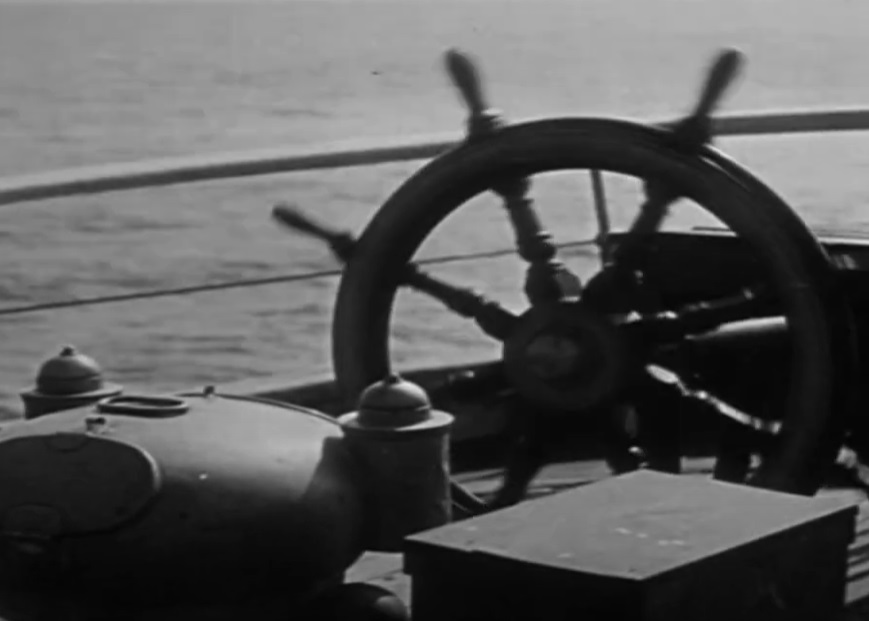 Hammer, The Mystery of the Mary Celeste (1935)
Hammer, The Mystery of the Mary Celeste (1935)
Edgar Tuthill
In 1879, Mary Celeste was en route when she made an unexpected stop on the island of St Helena, due to her captain Edgar Tuthill becoming suddenly ill.
Tuthill tragically passed on the island, becoming the third captain to die unexpectedly.
This brought up the dark theory that the Mary Celeste had been cursed all along.
The Haunting Of Mary Celeste
To recap, Mary Celeste’s first captain, Robert McLellan, became ill while on board and tragically passed quickly. Her second captain, Benjamin Briggs, was presumably unalive after abandoning ship for unknown reasons. And now her third captain, Edgar Tuthill also became ill while on board and tragically passed quickly.
The owners got a bad feeling and once again, the ship changed hands.
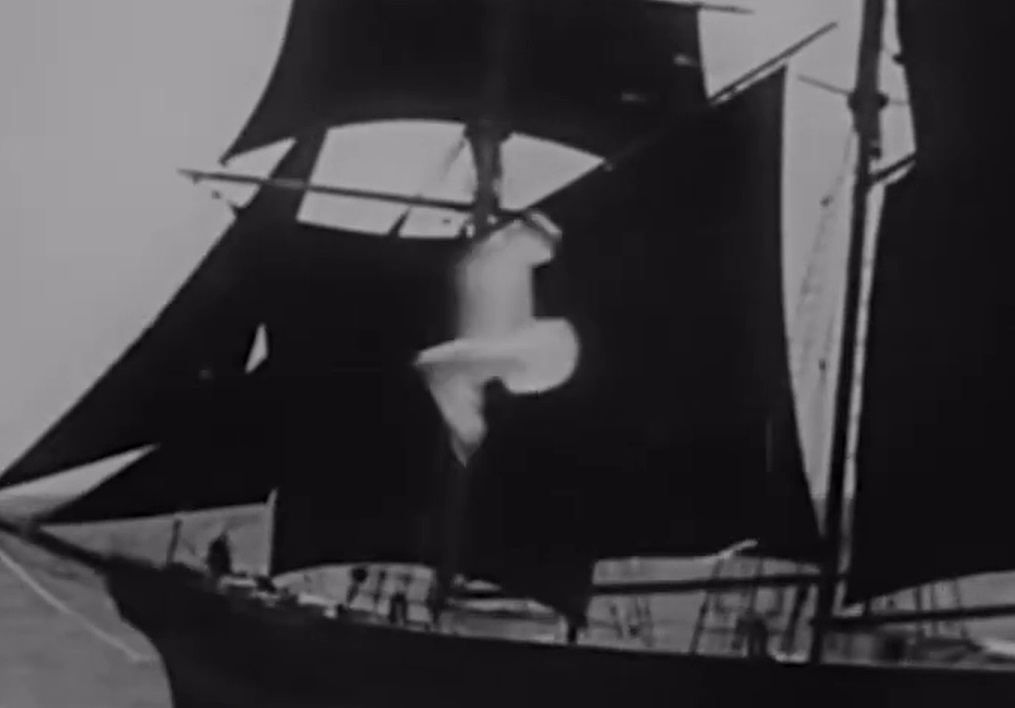 Hammer, The Mystery of the Mary Celeste (1935)
Hammer, The Mystery of the Mary Celeste (1935)
More Darkness Ahead
In 1880, new owners had taken over and not much was heard about Mary Celeste. There were no records of her voyages, but the owners claimed they tried to make her successful.
But when the ship continuously failed to make them any money, they came up with a dark plan.
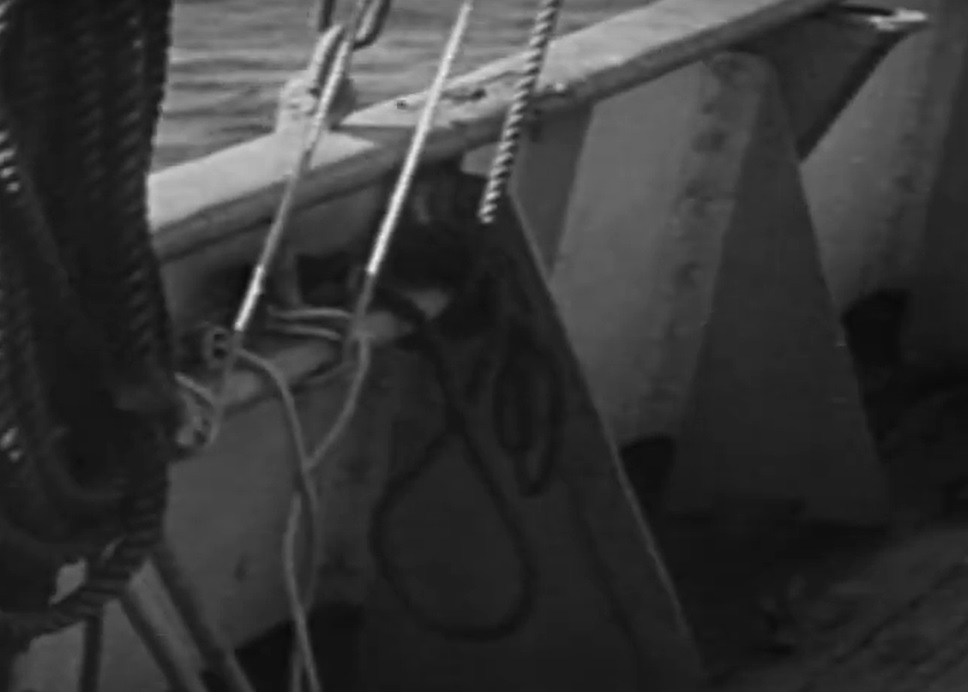 Hammer, The Mystery of the Mary Celeste (1935)
Hammer, The Mystery of the Mary Celeste (1935)
Giman C Parker
In 1884, Mary Celeste’s newest captain, Gilman C Parker conspired with a group of Boston shippers. They filled the ship with worthless cargo, but claimed it to be valuable goods and insured it for $30,000 US (over a million today).
Then, without saying too much to anyone else, they set sail for Haiti.
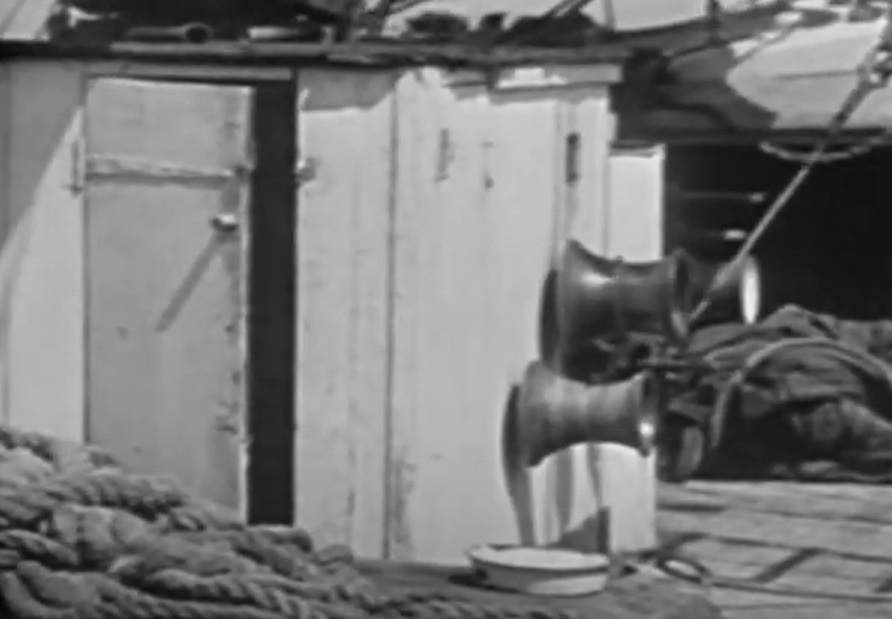 Hammer, The Mystery of the Mary Celeste (1935)
Hammer, The Mystery of the Mary Celeste (1935)
The “Accident”
About a month into the voyage, Mary Celeste approached a well-charted coral reef, the Rochelois Bank. Parker deliberately ran the ship onto the reef, ripping out her bottom and wrecking her beyond repair.
He and his crew then rowed themselves to shore, where he sold the salvageable cargo for $500, and confidently started an insurance claim.
The Investigation
The American consul filed a report that what Parker sold him was worthless. And with Mary Celeste’s well-documented past, the insurance company opened an intensive investigation.
Suspicions rose quickly, and it didn’t take long to shut this one down.
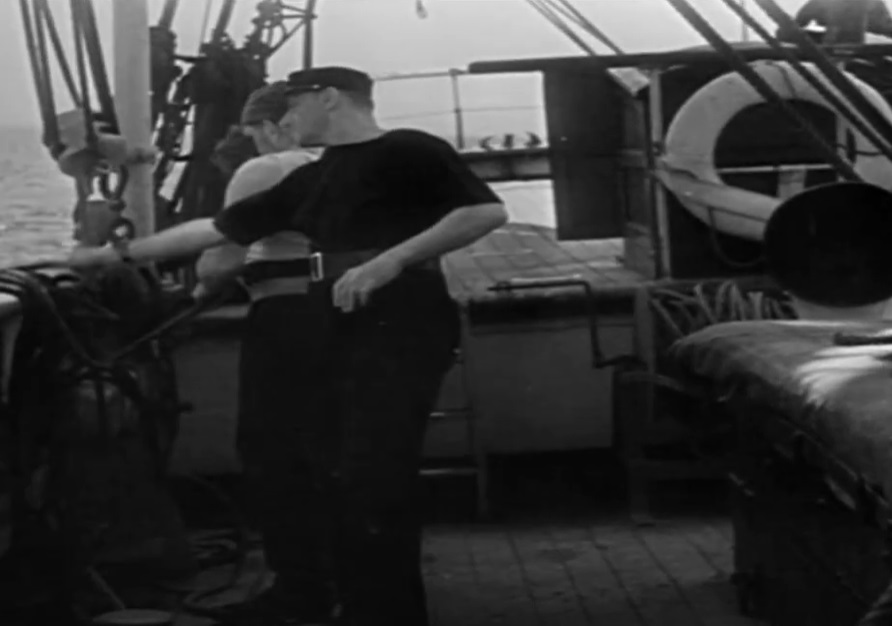 Hammer, The Mystery of the Mary Celeste (1935)
Hammer, The Mystery of the Mary Celeste (1935)
Guilty
Parker, along with his conspirators, were found guilty of conspiracy to commit insurance fraud. Parker was also charged with “willfully casting away the ship"—which presented him with a serious penalty.
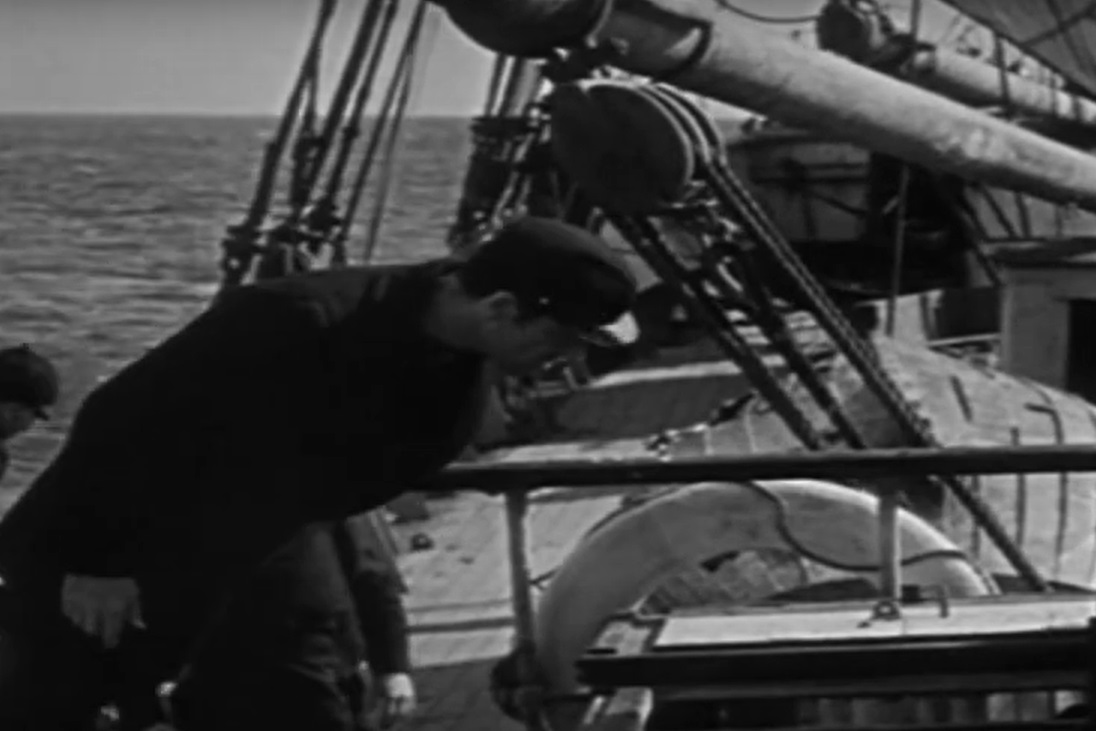 Hammer, The Mystery of the Mary Celeste (1935)
Hammer, The Mystery of the Mary Celeste (1935)
The Death Penalty
Willfully casting away a ship is a crime known as “barratry”—which, at the time, carried the death penalty.
All Parker wanted was a payout for a ship that ultimately cost him more money than it made him. Now, he was in big trouble.
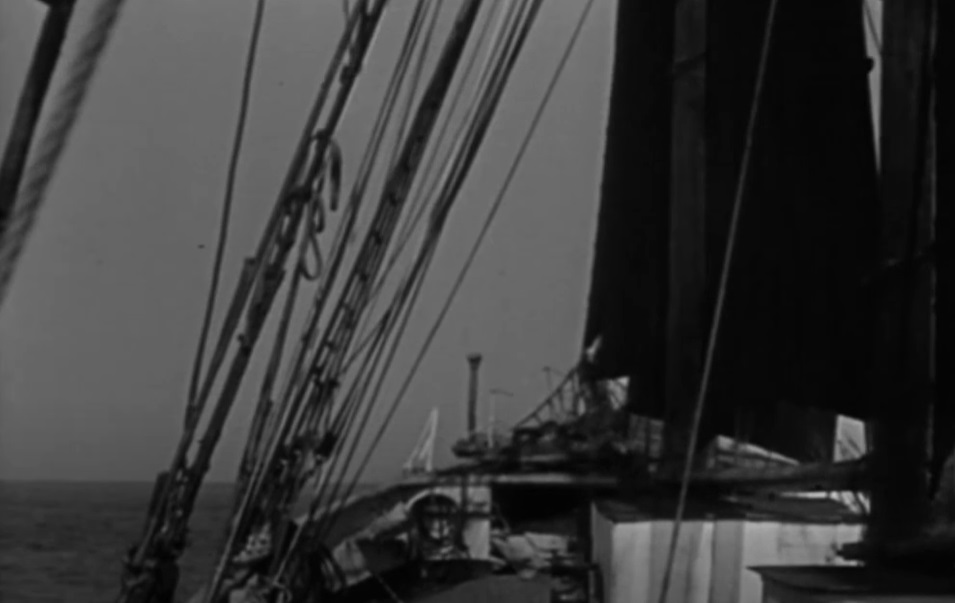 Hammer, The Mystery of the Mary Celeste (1935)
Hammer, The Mystery of the Mary Celeste (1935)
A Slap On The Wrist
The conspiracy trial was first, and fortunately for Parker and the others, the jury could not agree on a verdict, and they were basically set free with the promise to pay back any money they got for the wreckage or for insurance.
Next, was Parker’s trial for barratry.
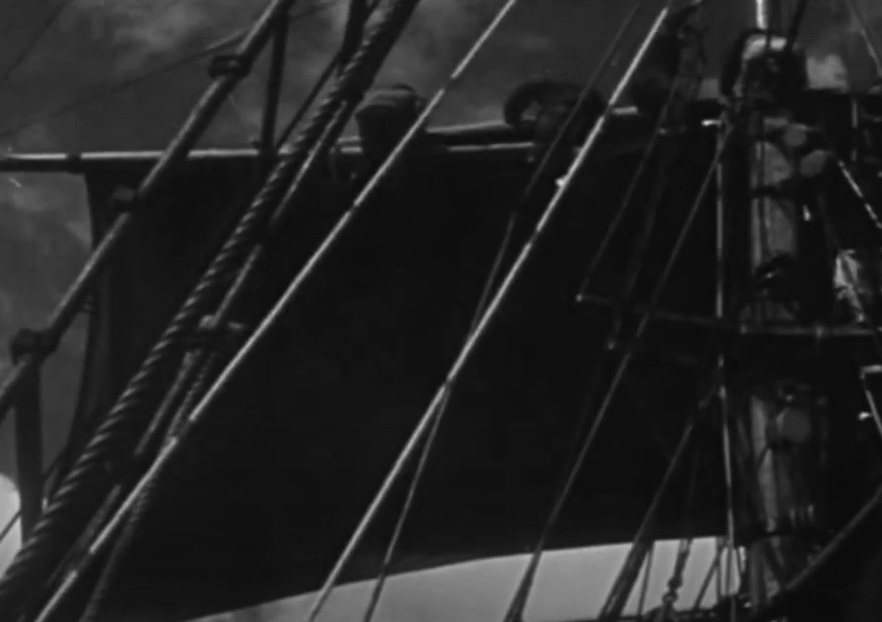 Hammer, The Mystery of the Mary Celeste (1935)
Hammer, The Mystery of the Mary Celeste (1935)
Freedom
Once again, Parker escaped the law. The barratry charge against him was deferred, and he was allowed to go free.
But while he still had his life, he didn’t exactly escape the consequences of his actions.
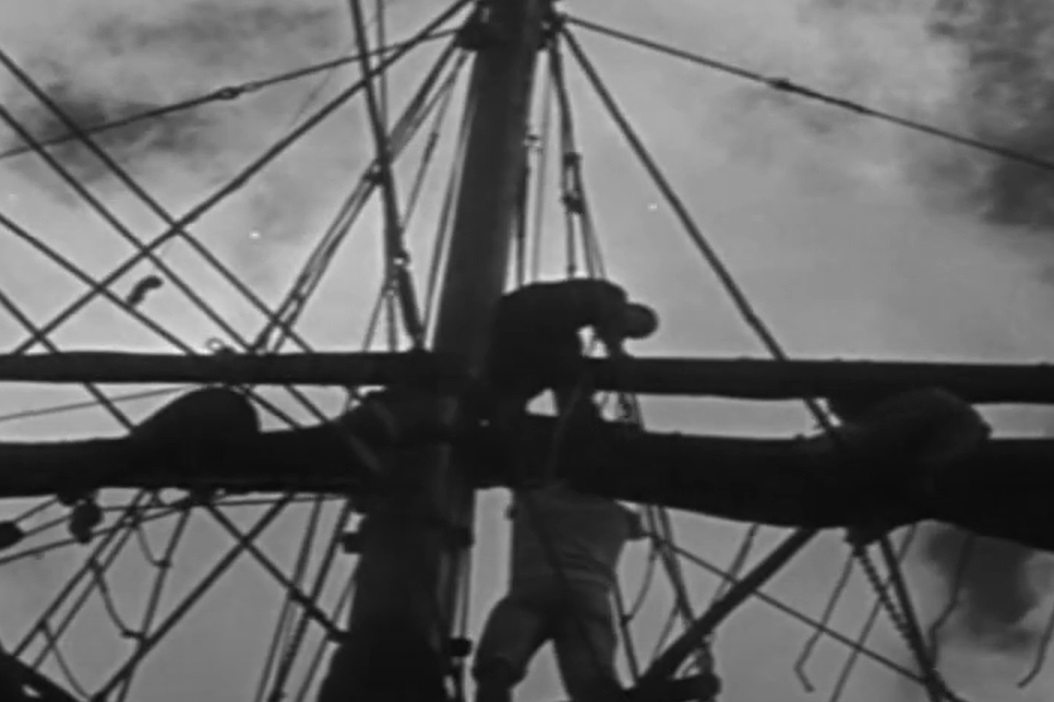 Hammer, The Mystery of the Mary Celeste (1935)
Hammer, The Mystery of the Mary Celeste (1935)
Not So Free After All
Parker’s professional reputation was completely ruined. He instantly became unwanted and unknown. He lost all of his money, his possessions, and his family. Only three months after his trial ended, Parker—living in complete poverty—lost his life.
He was now Mary Celeste’s fourth captain to perish.
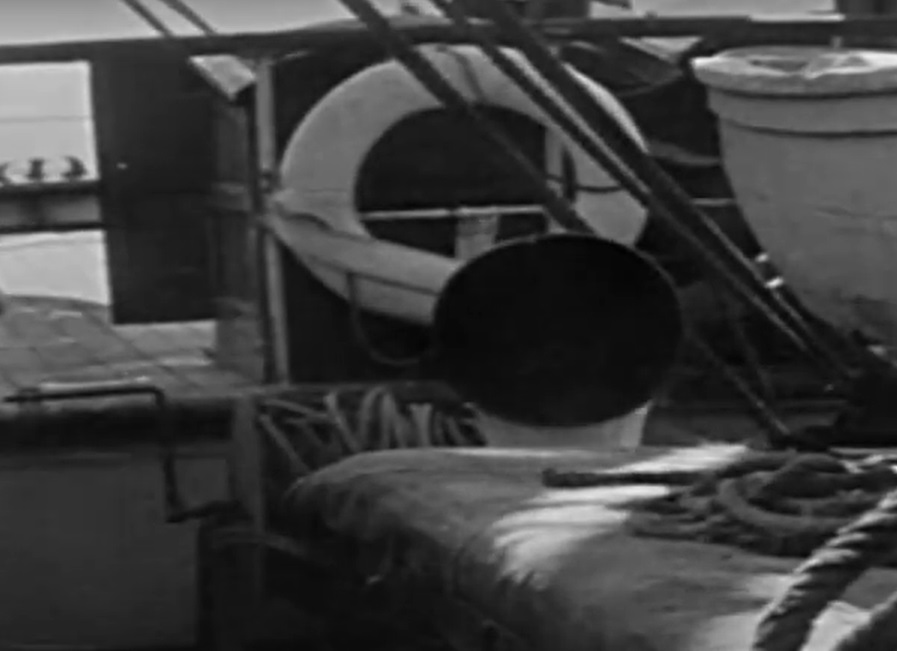 Hammer, The Mystery of the Mary Celeste (1935)
Hammer, The Mystery of the Mary Celeste (1935)
The Mary Celeste Curse
Parker’s partners in crime ultimately went crazy. One of them ended up severely mentally unwell, and the other took his own life.
These facts only add to the theory of the curse. One investigator even claimed, “If the court of man could not punish these men, the curse that had devilled the ship since her first skipper Robert McLellan had died on her maiden voyage could reach beyond the vessel's watery grave and exact its own terrible retribution".
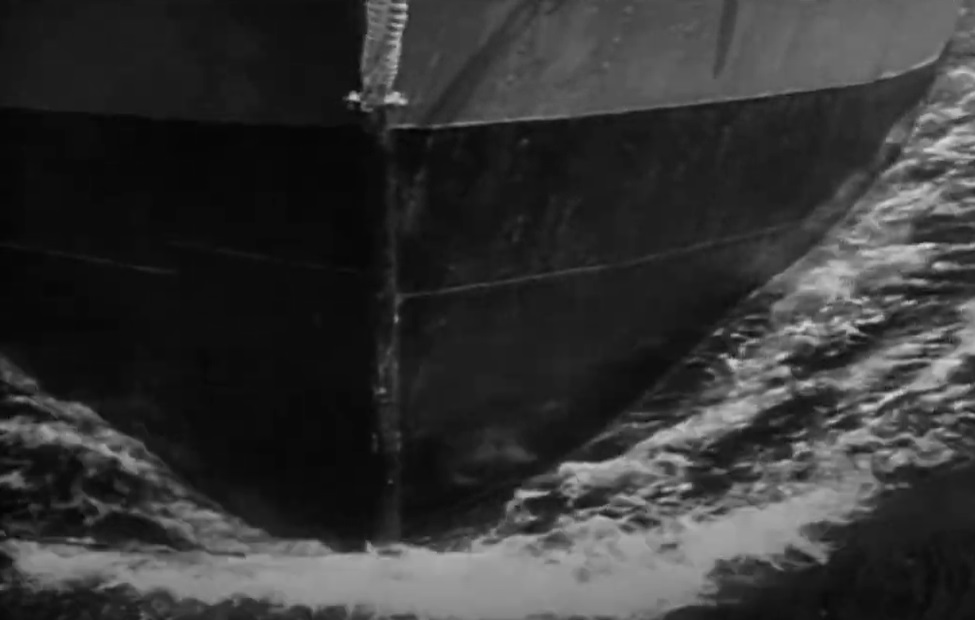 Hammer, The Mystery of the Mary Celeste (1935)
Hammer, The Mystery of the Mary Celeste (1935)
The Mystery Remains
While we may never actually know what happened on Mary Celeste’s fateful voyage when Captain Benjamin Briggs, his family, and his crew vanished without a trace, the most common theory continues to be that Mary Celeste’s fate was in the hands of the paranormal.


